
Where to Stay in Bali
A Guide to Choosing the Perfect Island Location for Your Stay on the Island that has Something for Everyone.
Table of Contents
Must-Visits: Uluwatu, Ubud, & Canggu
Hidden Gems: Munduk, Sidemen, & Sumberkima
Bali’s Outer Islands: Nusa Penida, Nusa Lembongan & The Gili Islands
Explore destinations in Bali, Indonesia
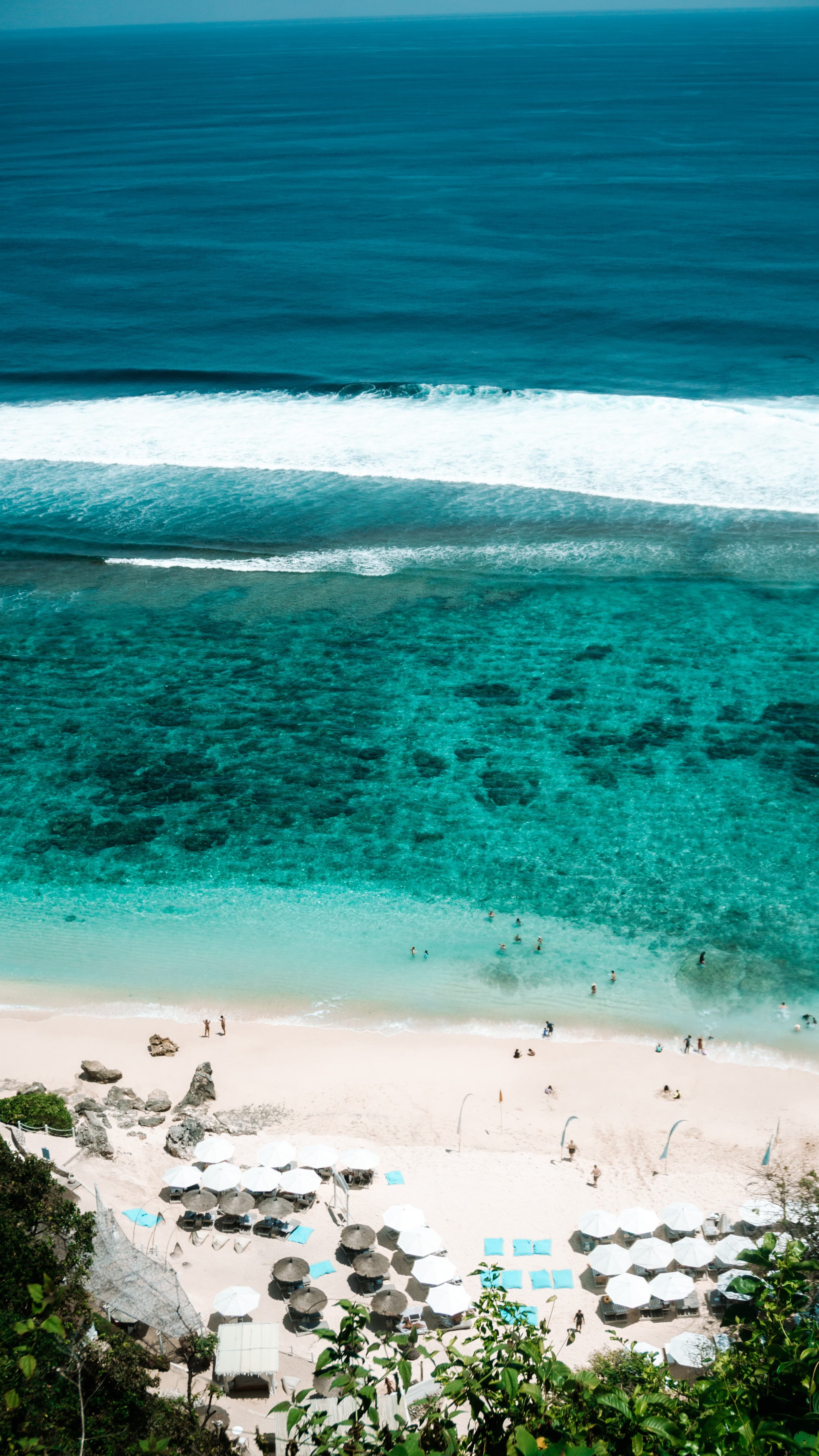
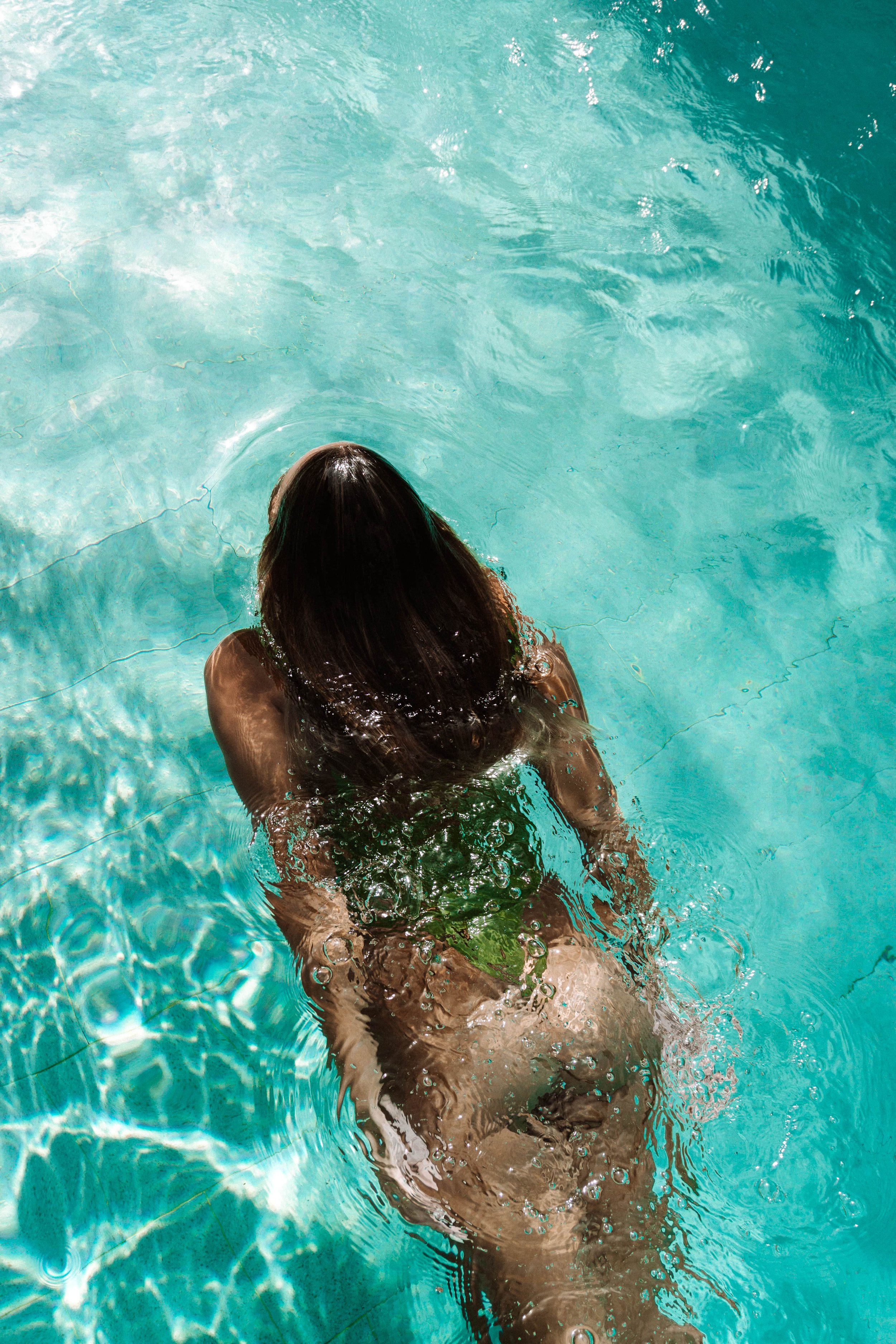
Uluwatu
A Surfer’s Paradise and Beach Lover’s Dream Destination
Uluwatu holds a special place in my heart. Located at the southern tip of Bali, just an hour from Ngurah Rai International Airport (DPS), this hidden gem offers a perfect blend of stunning turquoise beaches, cliffside nightclubs, and world-class waves that attract surfers from around the globe. With warm-hearted locals, incredible food, and a laid-back vibe, Uluwatu is the ideal escape for those seeking tropical weather without the crowds you’d find in Canggu or Ubud. Plan at least 3 unforgettable nights to experience the magic of this surfer’s paradise.
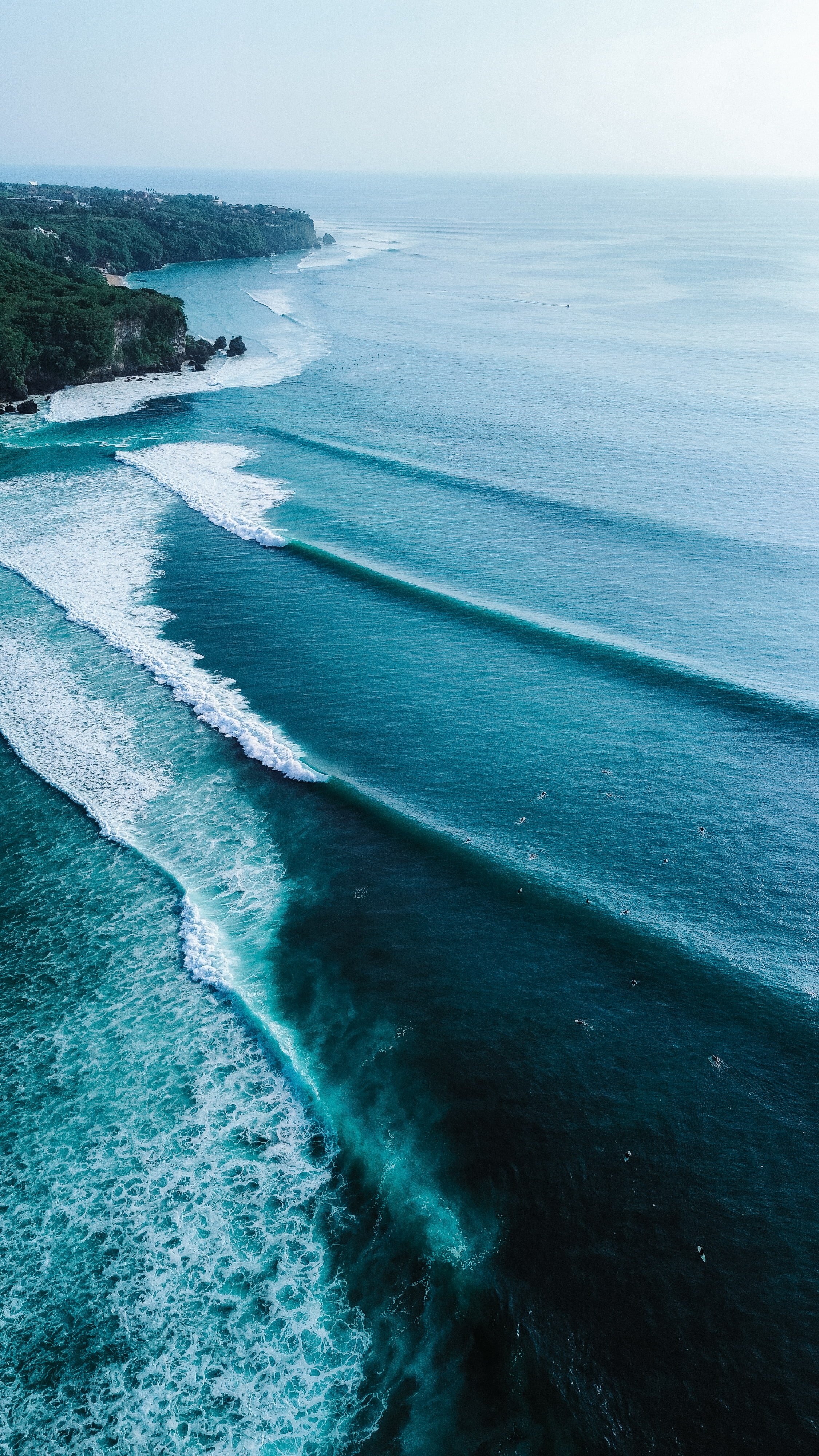
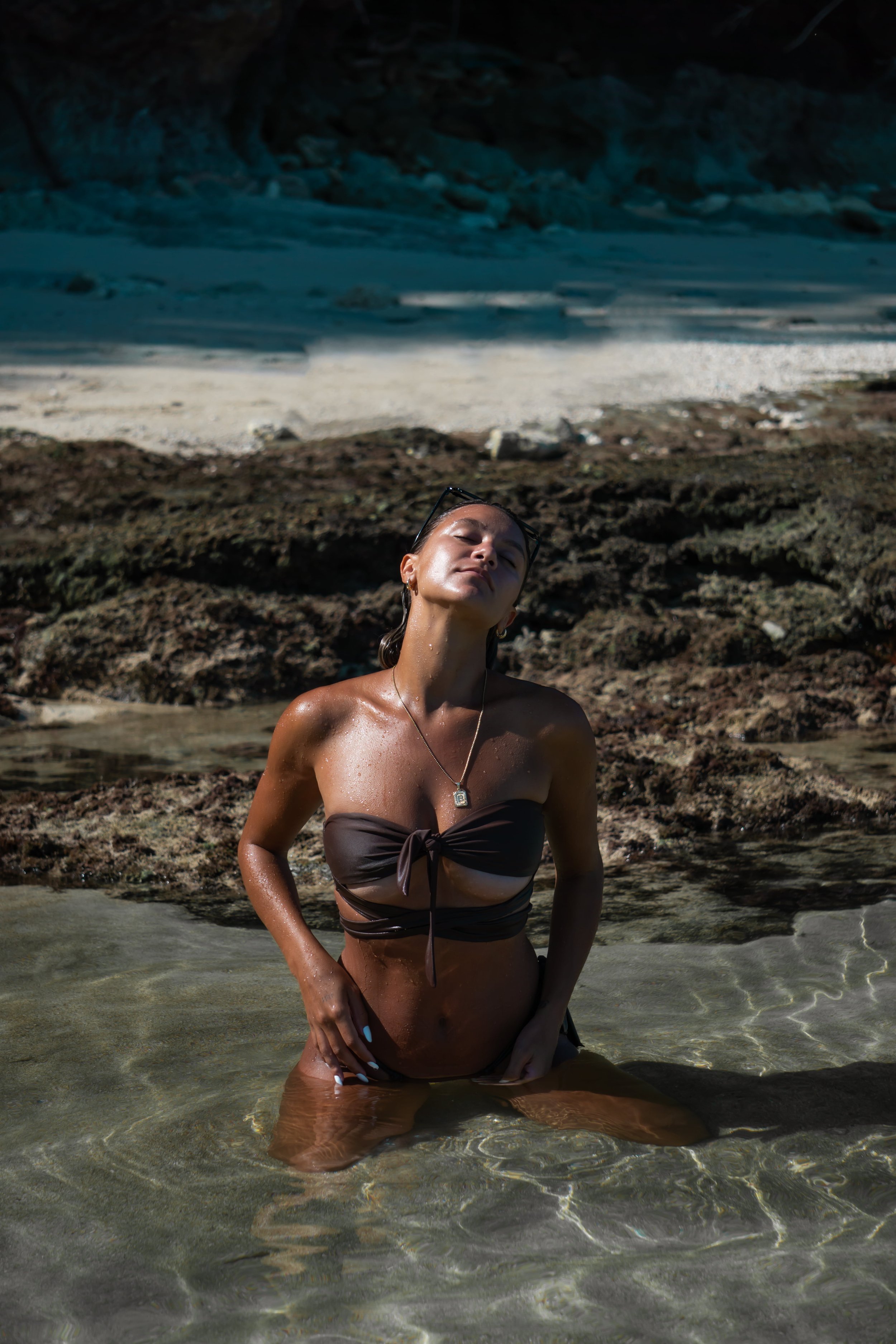
-
The best time to visit Uluwatu is during the surf season from May to August, when consistent swells and perfect waves attract surfers from around the globe. The dry season brings ideal weather for beach days, cliffside sunsets, and exploring the local culture. The shoulder season of September and October is also a great time to visit, offering warm weather, fewer crowds, and still excellent surf conditions.
-
Plan to stay 3-7 nights to fully soak in Uluwatu’s laid-back vibe and experience everything from world-class surf spots to hidden beaches and cliffside bars.
-
While Uluwatu has been slower to develop compared to Canggu or Ubud, its food scene is thriving with a growing number of hip cafes, surf shacks, and beach clubs. Whether you’re looking for smoothie bowls, fresh seafood, or sunset cocktails, Uluwatu has a wide variety of options that cater to every taste. From laid-back beachside eateries to stylish cliffside spots, the food in Uluwatu perfectly complements the area’s relaxed vibe and stunning ocean views.
-
Uluwatu is often said to be the next Canggu, with rapid development and an influx of visitors increasing the crowds each day. Despite the growth, Uluwatu remains significantly less crowded than busy spots like Ubud or Canggu. You’ll still find plenty of hidden beaches, quiet surf breaks, and relaxed spots away from the hustle, making it an ideal destination for those seeking a laid-back vibe without the heavy crowds.
-
Uluwatu might not have as many parties as Canggu or Seminyak, but if you know where to go, there’s always somewhere to party every night. The area’s nightlife is more laid-back and intimate, with cliffside bars, beach clubs, and hidden spots offering stunning sunset views and live music. Whether you’re into casual drinks by the ocean or dancing under the stars, Uluwatu’s nightlife has a unique charm. Check out our full guide here for the best places to party in Uluwatu.
-
Uluwatu is renowned for its dreamy sea cliffs and stunning white sand beaches, often considered the best in Bali. The coastline is dotted with hidden coves, crystal-clear waters, and epic surf spots that attract beach lovers and adventurers alike. On a clear day, you can even catch breathtaking views of Bali’s volcanoes in the distance, adding to the area's natural charm. For those seeking a combination of pristine beaches and dramatic landscapes, Uluwatu is a true paradise.
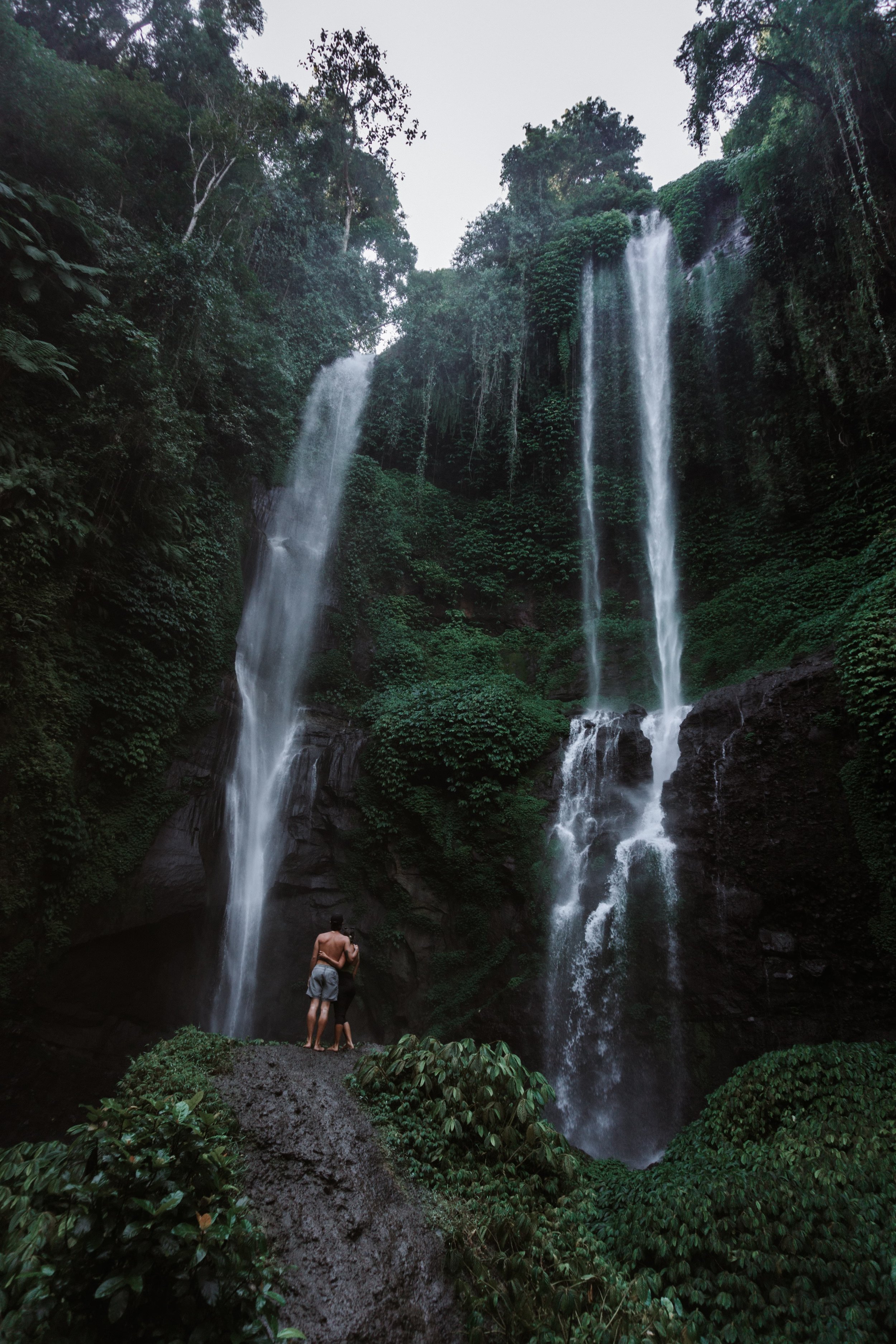

Munduk
Best Place to Stay for Mountain Retreats & Waterfall Escapes
Munduk is a hidden gem in Bali, offering a serene retreat that stands out among the best places to stay on the island. Just a two-hour drive north of Ubud, this charming village is nestled in Bali's mountainous region, where the air is cooler and the ambiance misty. The journey to Munduk takes you through lush forests, picturesque rice terraces, and majestic hills, immersing you in the heart of authentic Balinese life.
Situated at an elevation of 1,000 meters above sea level, Munduk is the ideal destination for those seeking peace and tranquility, away from the crowded beaches and busy streets of Seminyak and Uluwatu. The village is surrounded by breathtaking natural beauty, including winding roads lined with wild hydrangeas, making it one of Bali's most scenic locations. With cooler temperatures and stunning mountain views, Munduk offers the perfect setting for a relaxing getaway.
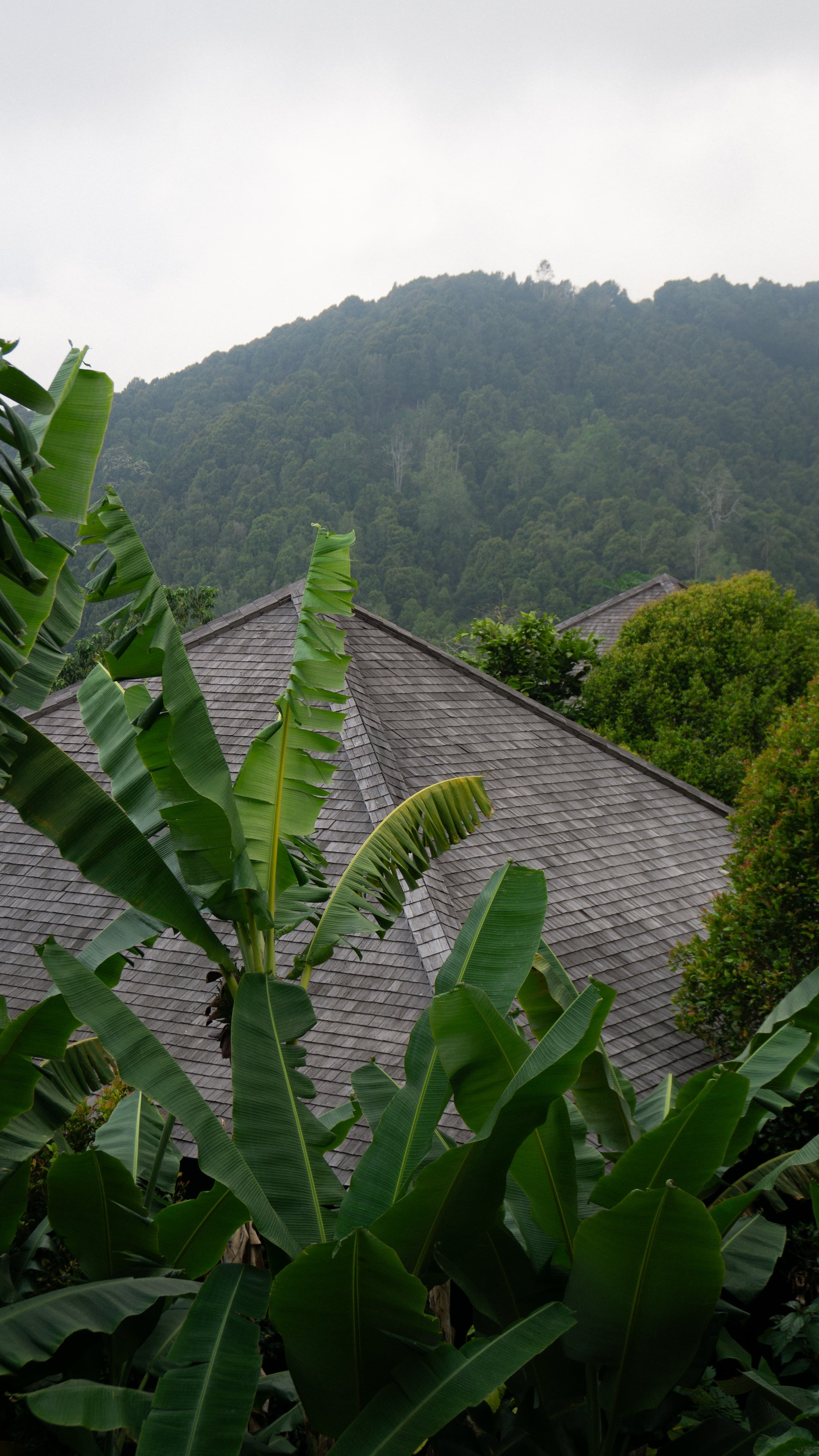

-
The best time to visit Munduk is from May to November, during Bali’s dry season. With its higher elevation, Munduk experiences cooler temperatures and misty mornings, making it a refreshing escape from the island’s hotter lowland regions. The dry season is ideal for exploring Munduk’s lush landscapes, scenic hiking trails, and hidden waterfalls without the worry of heavy rainfall.
-
To fully experience the tranquility and natural beauty of Munduk, plan to stay for 2-4 nights. This allows enough time to explore the area’s scenic hiking trails, visit hidden waterfalls, and immerse yourself in the cooler, misty mountain ambiance.
-
Munduk’s food scene is all about charm and authenticity. You’ll find mostly local warungs serving up traditional Balinese dishes alongside a handful of upscale Western restaurants. Whether you’re craving a warm bowl of mie goreng or a comforting pasta in a mountain-view setting, Munduk’s got you covered. The vibe here is relaxed and unpretentious, perfect for savoring a meal after exploring waterfalls and trails. Curious where to eat? We’ve rounded up the best spots in our full Munduk guide here.
-
Munduk’s remote location—around 2-3 hours from Ubud and even farther from popular areas like Uluwatu and Seminyak—keeps it blissfully uncrowded. This tucked-away mountain village remains one of Bali’s best-kept secrets, offering peaceful surroundings and untouched natural beauty. Unlike the more tourist-heavy spots, you’ll find few crowds here, making it the perfect escape for those looking to enjoy Bali without the hustle.
-
Nightlife in Munduk is all about slowing down and savoring the moment. There are no bars or late-night parties here—just the crackle of a fire, a good book, and a sky full of stars. It’s the kind of place where you can roast marshmallows and let the cool mountain breeze be your soundtrack.
-
Munduk is a nature lover’s dream, boasting some of the most breathtaking landscapes in all of Bali. Picture misty mountain views, vibrant green jungles, and thundering waterfalls hidden along scenic trails. The natural beauty here feels untouched and raw, making it a perfect escape for those who want to experience Bali’s wild side.
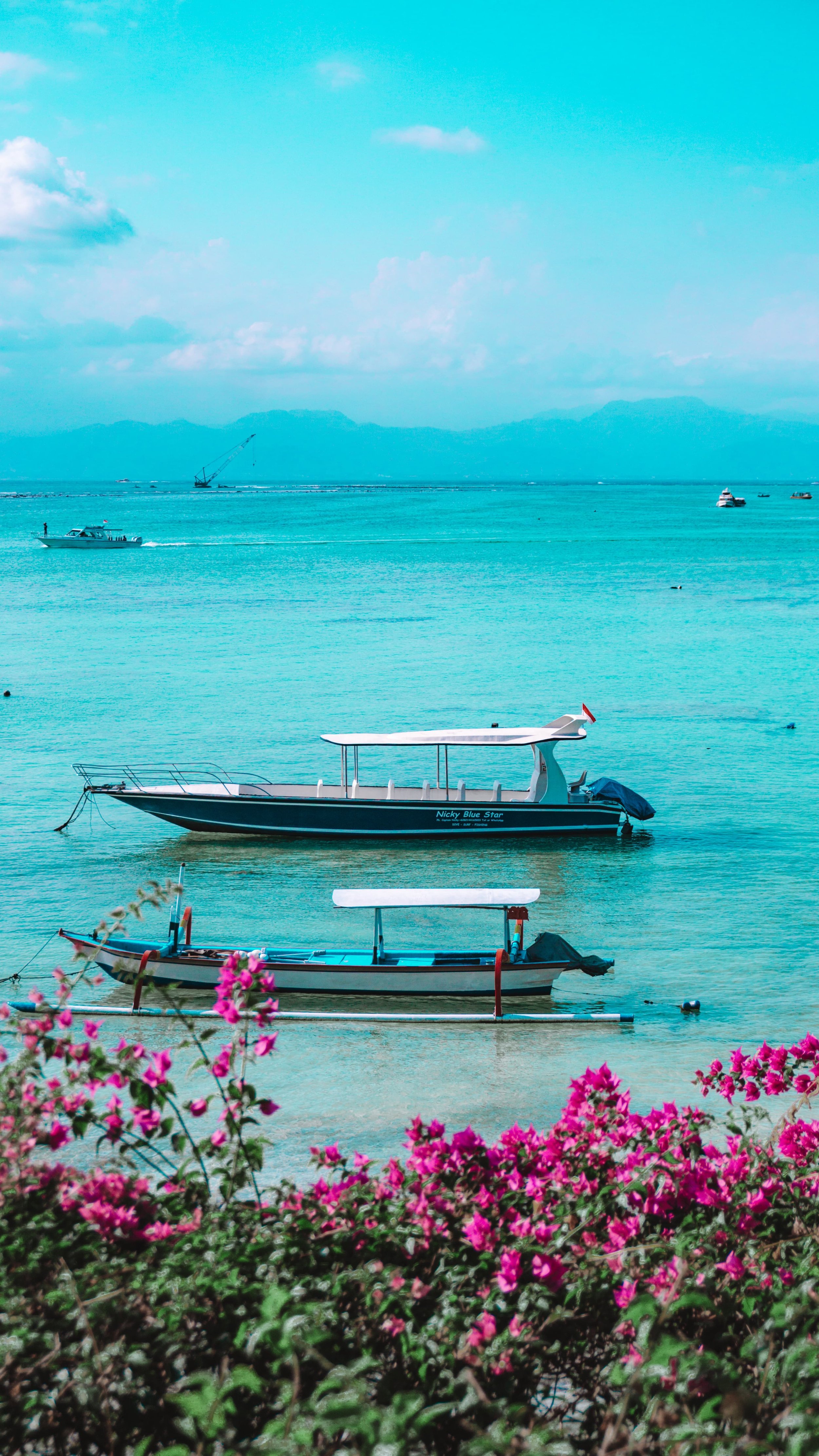
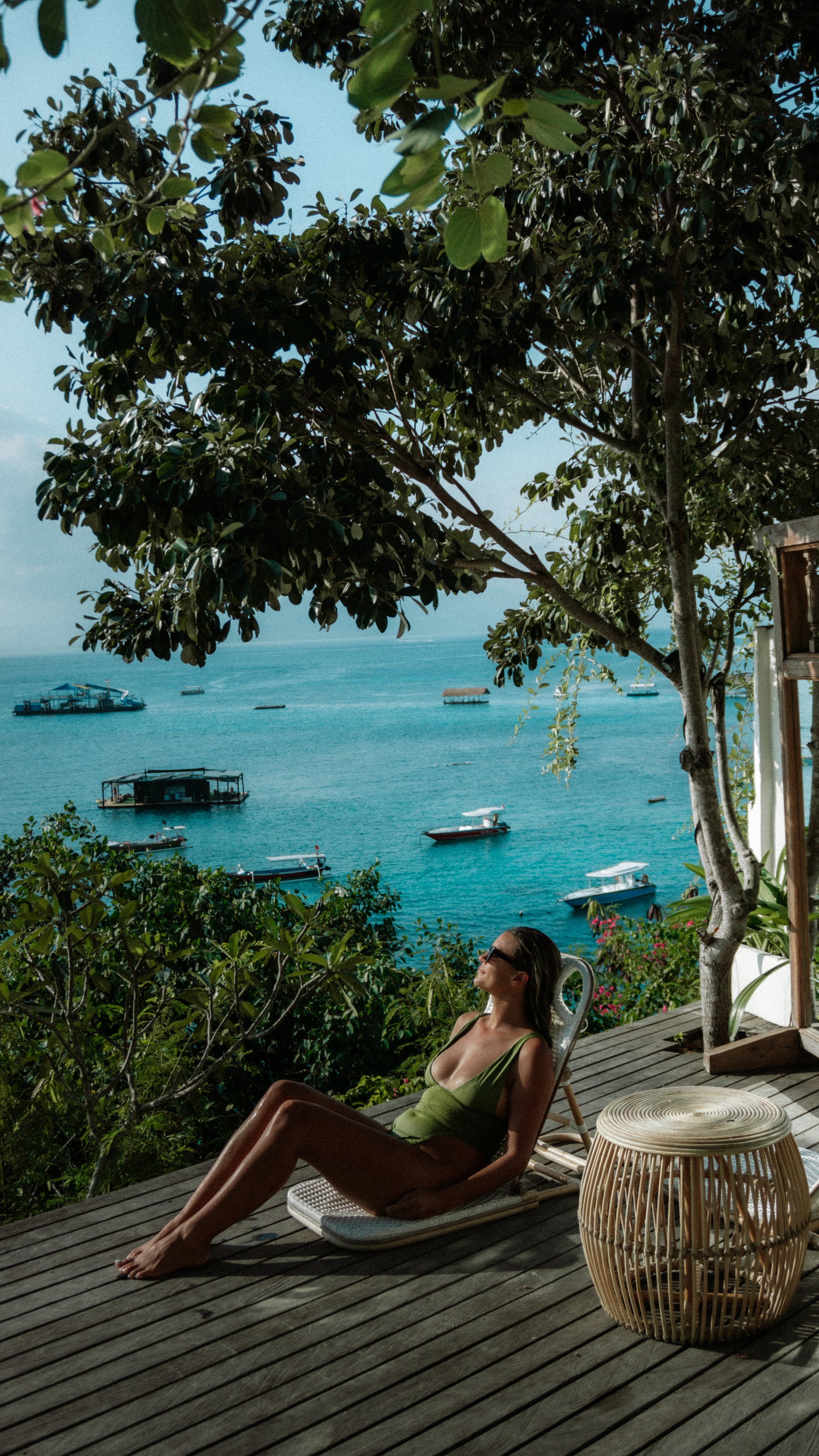
Nusa Lembongan
island life with Laid-Back Vibes, Surf Shacks & Ocean Views
Nusa Lembongan is an idyllic piece of paradise 30 minutes off the coast of Bali. With crystal clear turquoise waters, cute cafes on the water, and laid-back beach clubs, it is the very definition of “island life.” This is one of my favorite places in Bali for its relaxed charm and stunning natural beauty. From top hotels and the best restaurants to must-see attractions and insider tips, Nusa Lembongan is a must-visit destination that perfectly captures the essence of easy island living.
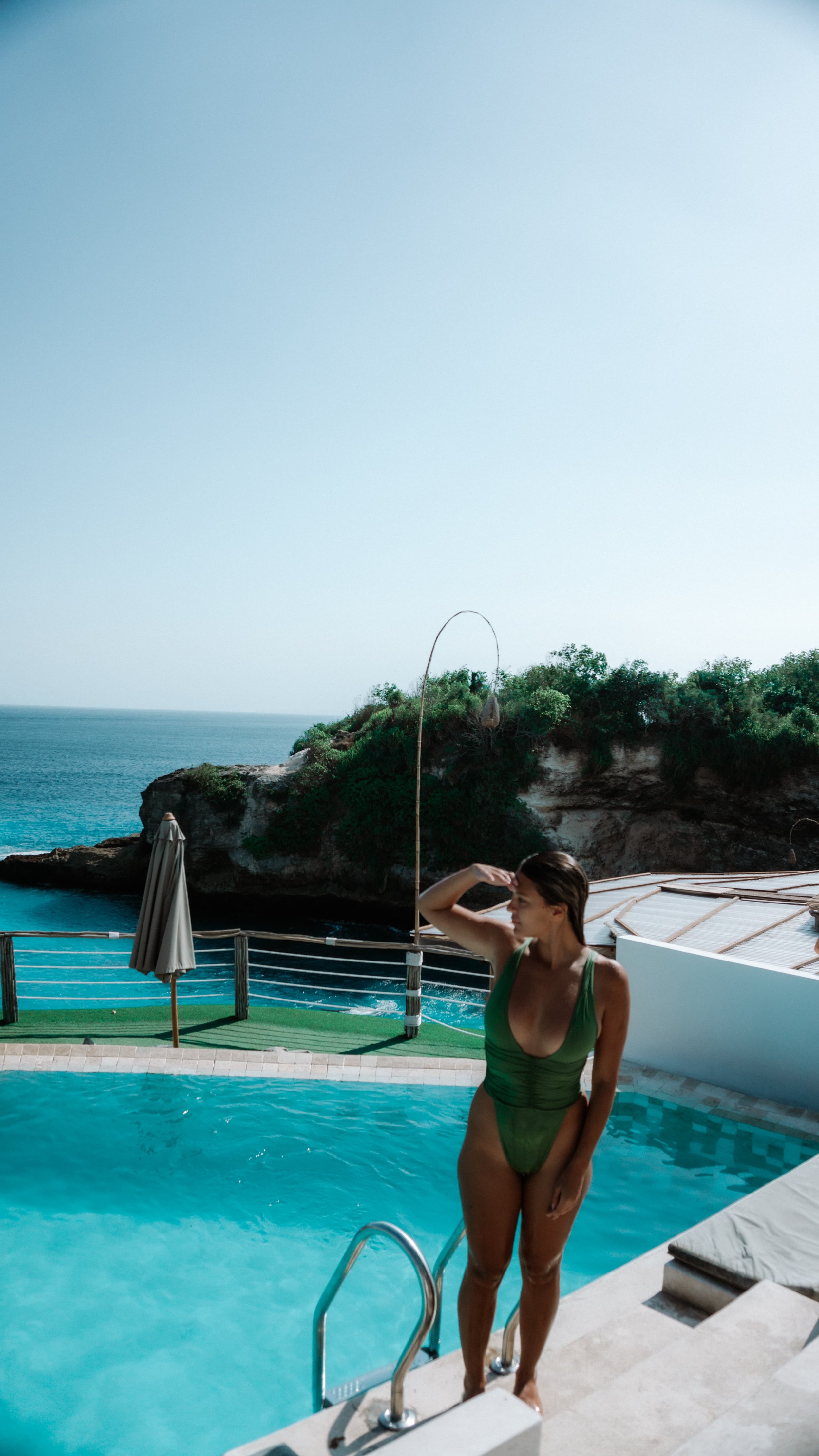
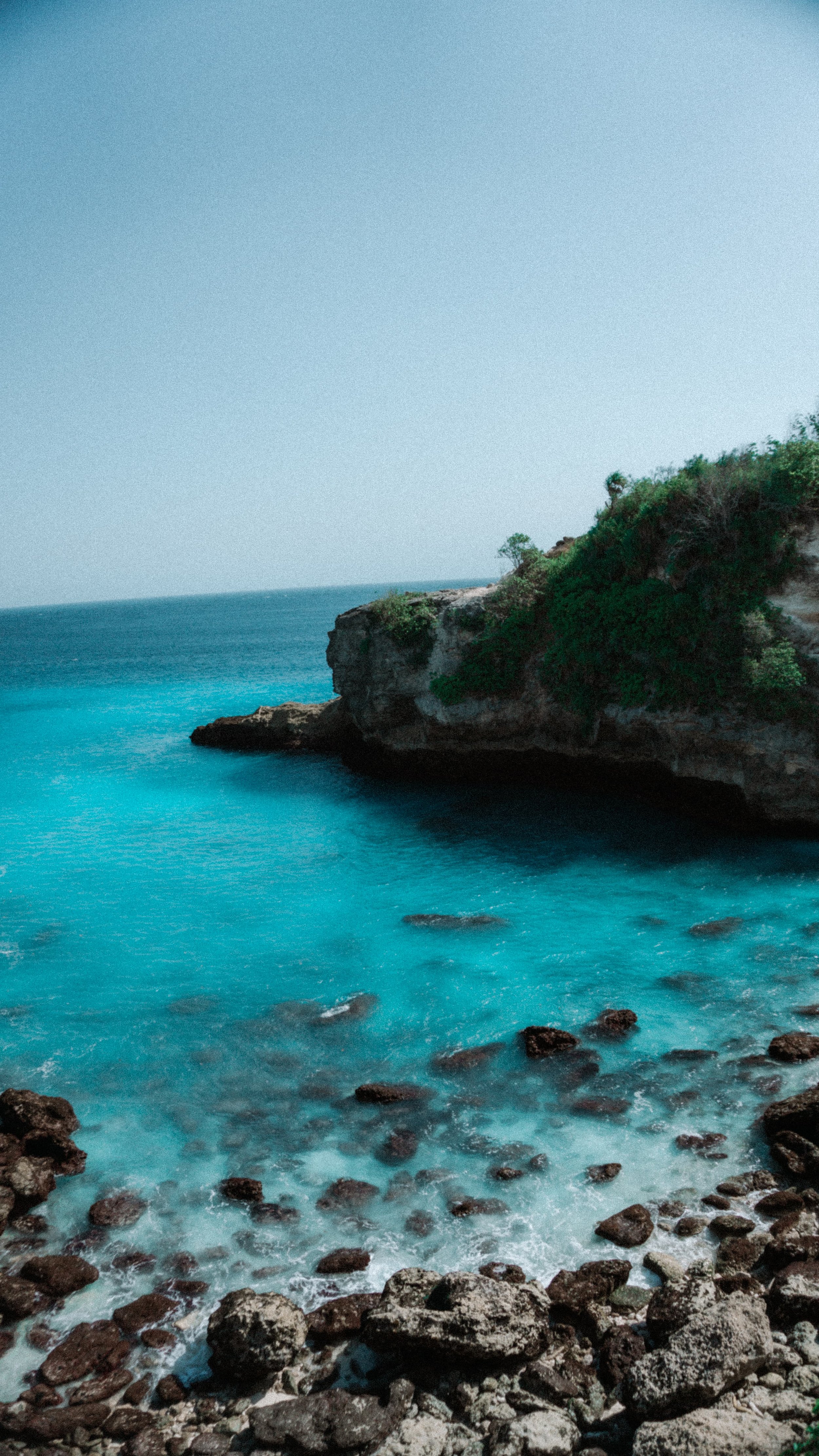
-
The best time to visit Nusa Lembongan is during the dry season, from April to September, when you can expect sunny skies and minimal rainfall. However, if you're traveling between November and March, Nusa Lembongan might still be a great option. Despite being only 15km from Bali, Nusa Lembongan has a unique microclimate that often results in longer dry spells and better weather year-round.
While Bali’s mountainous regions attract more rain, Nusa Lembongan’s low-lying terrain tends to stay drier. It's not unusual to see rain pouring down on Bali while Nusa Lembongan enjoys clear skies. This is especially true during the wet season, when southwest winds push rain clouds away from the Nusa Islands.
So, if you're looking to escape Bali's wet weather during the shoulder seasons, Nusa Lembongan could be your sunny retreat. Local experiences and even surf cameras often show a stark contrast between the two locations, with Nusa Lembongan basking in sunshine while Bali is drenched in rain.
-
For a well-rounded experience in Nusa Lembongan, I recommend spending at least 3 nights on the island. This gives you enough time to explore its stunning beaches, snorkel in crystal-clear waters, and soak in the laid-back vibe. However, if you have the time, you could easily spend a month here, enjoying the slower pace and discovering hidden gems at your leisure. Nusa Lembongan is a place where time seems to slow down, making it perfect for an extended stay.
-
Nusa Lembongan’s food scene is just as magical as the island itself. One of the things I love most about dining here is that nearly every restaurant and beach club is perched right above the water or nestled on the sand, offering endless blue views and glimpses of Bali’s volcanoes in the distance. Despite being a tiny island, Lembongan surprises with plenty of options for food, drinks, fancy dinner dates, and lively beach clubs. Whether you’re after a casual meal or something a bit more upscale, this island has you covered.
-
Munduk’s remote location—around 2-3 hours from Ubud and even farther from popular areas like Uluwatu and Seminyak—keeps it blissfully uncrowded. This tucked-away mountain village remains one of Bali’s best-kept secrets, offering peaceful surroundings and untouched natural beauty. Unlike the more tourist-heavy spots, you’ll find few crowds here, making it the perfect escape for those looking to enjoy Bali without the hustle.
-
You may have heard of Gili T, the infamous party island off Lombok that beachgoers flock to from Bali—Lembongan is definitely not that. While there’s one big beach club, Ohana’s, that keeps the music going until about 11 PM and a few bars with karaoke nights, this island is more about relaxed evenings than all-night parties. It’s the perfect spot if you’re looking for a laid-back vibe with a drink in hand, but don’t expect a wild party scene here.
-
Nusa Lembongan is home to some of the most stunning beaches and clearest waters in all of Bali. Unlike Canggu or even Uluwatu during the rainy season, the shores here are pristine and free from litter. The views of Mount Agung in the distance are absolutely breathtaking, and if you’re lucky, you might spot massive manta rays gliding through the waves while you’re out surfing. The island always gives me that "Mamma Mia" vibe, like Sophie and Donna running around Greece—full of charm, beauty, and endless adventure.

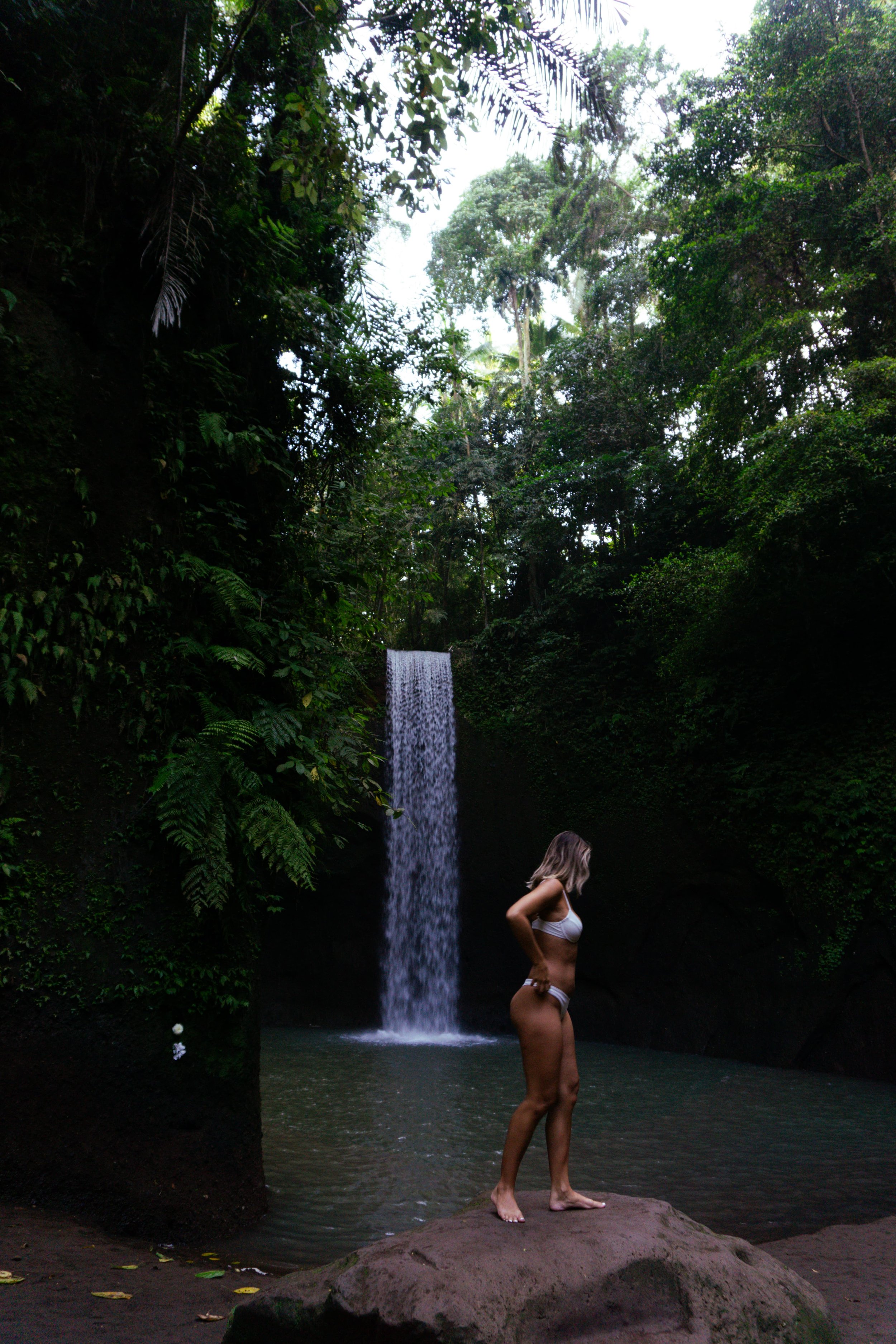
UBUD
Best For: Wellness Gurus & Yogis
Enveloped in lush greenery with a temple on every corner, Ubud stands as the vibrant heart of art and culture in Bali. Famous as the enchanting backdrop of "Eat, Pray, Love," this bustling city thrives amidst dense jungle surroundings. Ubud is overflowing with vegan food spots, yoga training centers, and wellness retreats, making it the perfect destination to unwind and focus on self-care. While the city center is alive with energy, the outskirts provide a peaceful sanctuary away from the hustle. Here, you can indulge in breathtaking views, riverside spa treatments, and explore stunning waterfalls. And for food lovers, Ubud is truly a paradise.
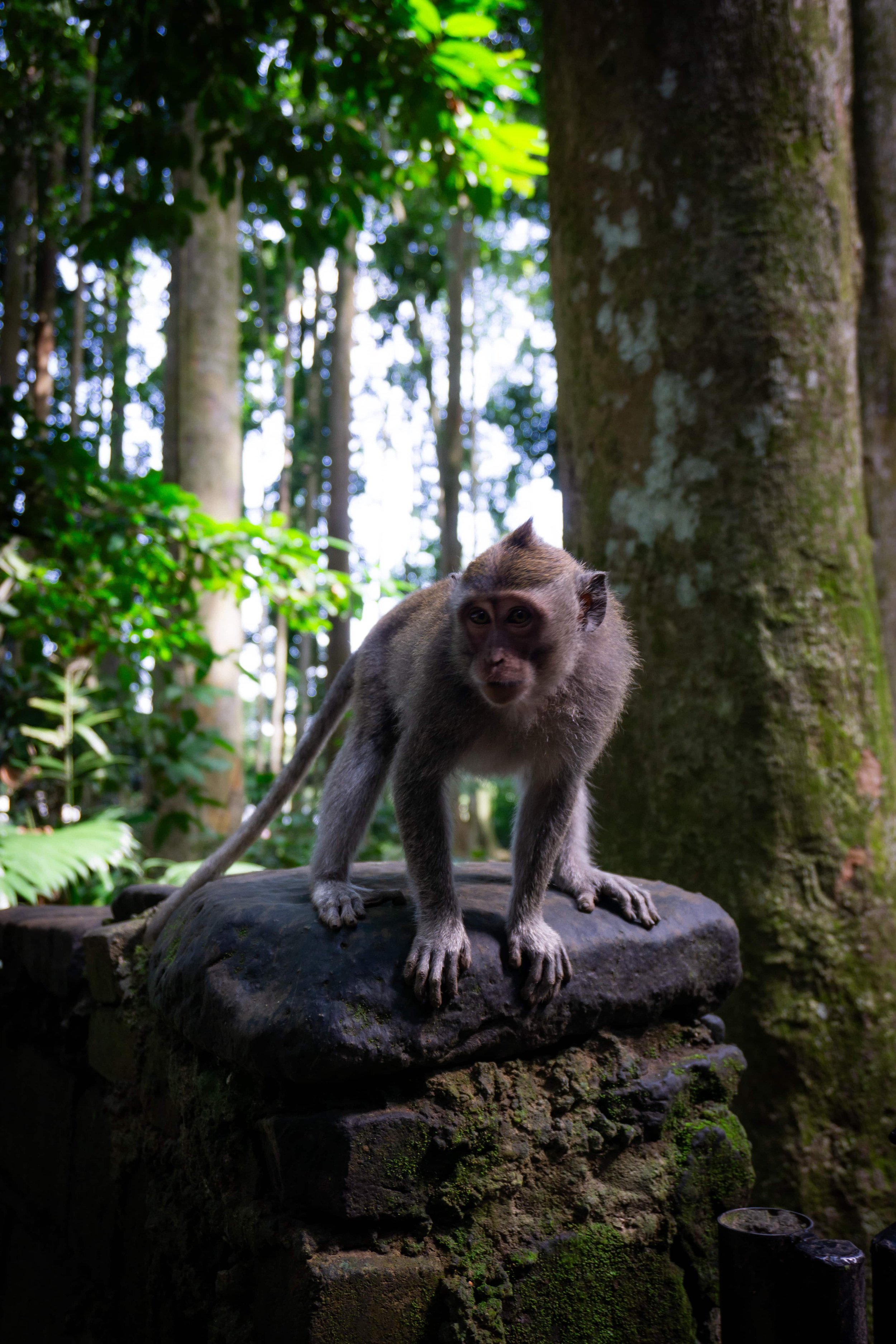
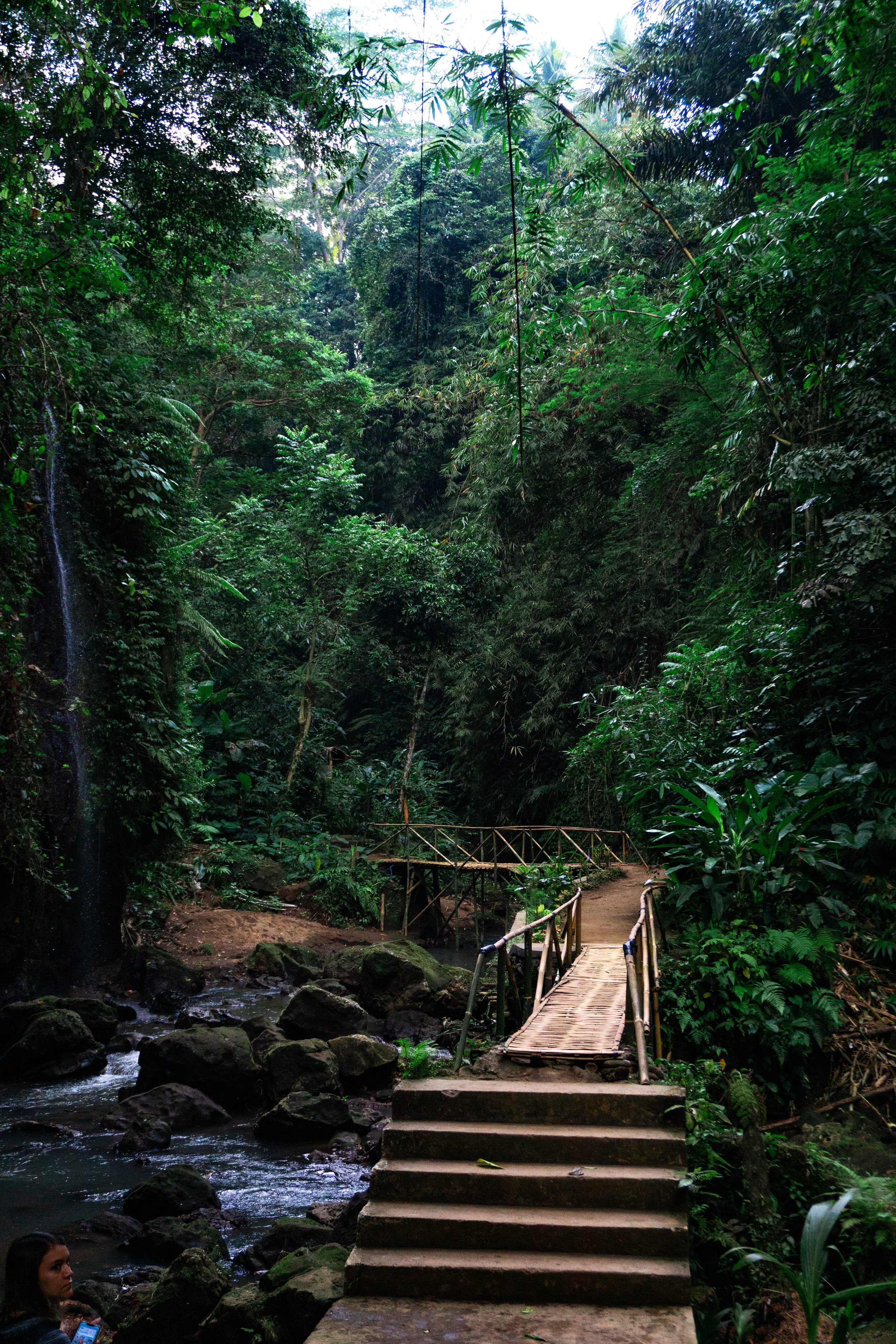
-
The peak season in Ubud runs from May to August, offering the best weather but also bringing heavy crowds. If you prefer a quieter experience with fewer tourists, I recommend visiting during the shoulder season in September and October. During this time, you’ll still enjoy great weather while avoiding the peak season rush, making it easier to explore Ubud’s temples, markets, and wellness retreats without the crowds.
-
I recommend staying in Ubud for 3-7 nights. While some might find Ubud a bit slow compared to the nightlife and parties of Canggu, I personally love it for the stunning nature and rich cultural experiences. Ubud is also a great base for day trips to other parts of Bali, letting you easily explore nearby waterfalls, temples, and scenic spots. With so much to see—from vibrant markets to serene temples—3-7 nights give you enough time to fully experience Ubud’s charm while enjoying some much-needed relaxation. Read my full post here for more tips.
-
The food in Ubud is, in my opinion, the best on the island. Whether you’re craving traditional dishes from cozy local warungs or indulging in high-end Michelin-star restaurants, Ubud has it all. The variety and quality of dining options here are unbeatable, catering to every taste and budget. If you’re a food lover, you simply can’t go wrong exploring Ubud’s culinary scene.
-
Ubud is one of the most popular destinations in Bali, thanks in part to its role as the backdrop for the iconic "Eat Pray Love." I’ll admit, I expected it to be just like the movie when I first visited, but instead found a bustling city packed with people and traffic. Despite the crowds, Ubud has plenty of hidden pockets of peace just outside the busy city center. The Sari Organik Rice Field trek, Penestanan stairs, and the quieter areas up north in Tegallalang offer serene escapes where you can still soak in Ubud’s natural beauty without the hustle.
-
Ubud isn’t known for its nightlife, so don’t expect any clubs here. What you will find are a few pool clubs and karaoke bars that stay open late, offering a more relaxed vibe. If you’re in the mood for a laid-back evening with good company, Ubud’s nightlife has just enough options to keep things interesting without the party scene of other Bali hotspots.
-
Ubud is home to some of the most breathtaking nature in Bali. Picture lush rice fields, scenic treks, and stunning valley views overlooking rivers that seem straight out of a postcard. You’ll even catch glimpses of distant volcanoes on clear days.
Read my Ubud Guide
Explore Ubud, Bali with this detailed guide featuring top attractions, cultural experiences, the best restaurants, and beautiful accommodations for an enriching and serene visit.
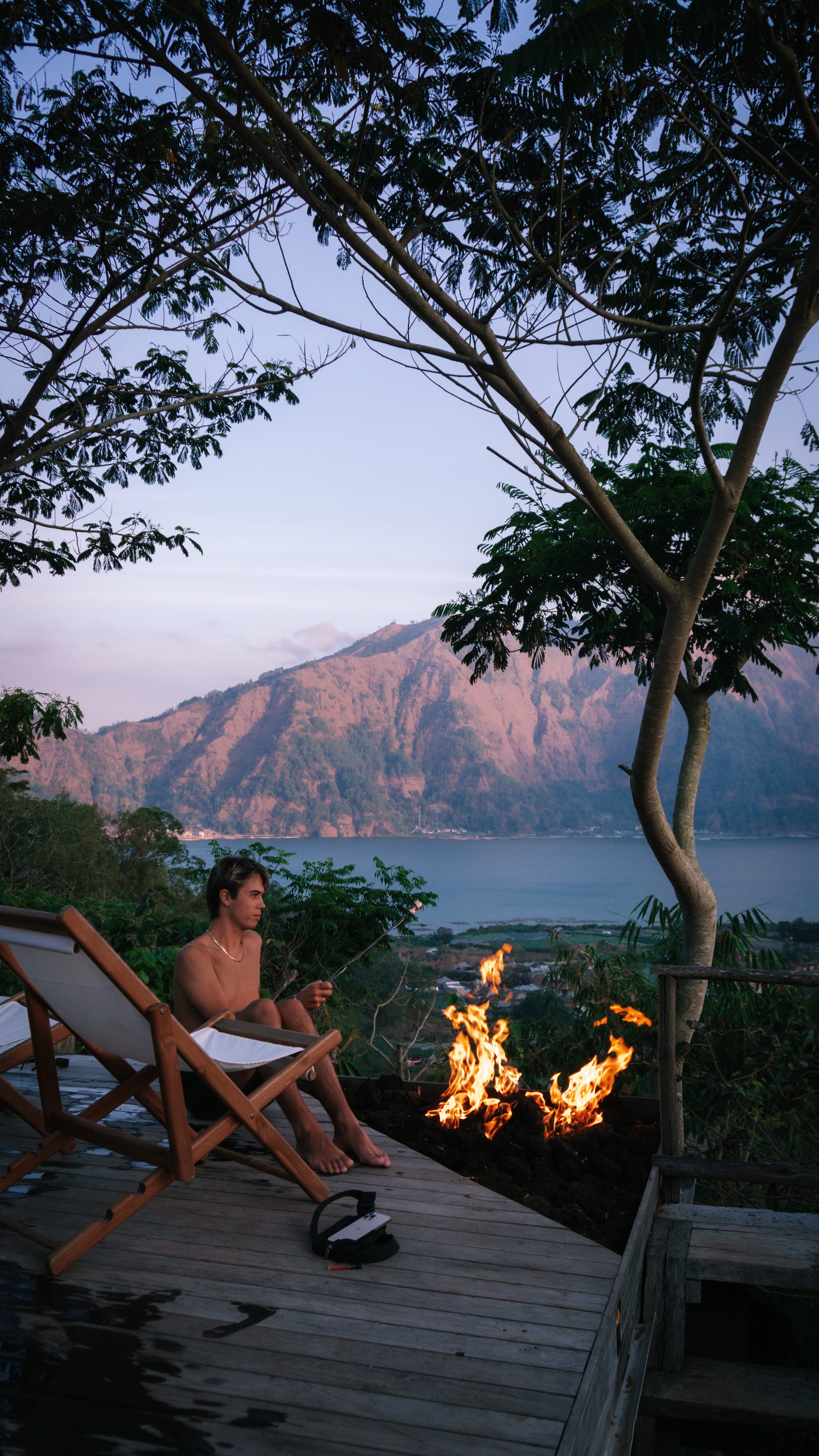
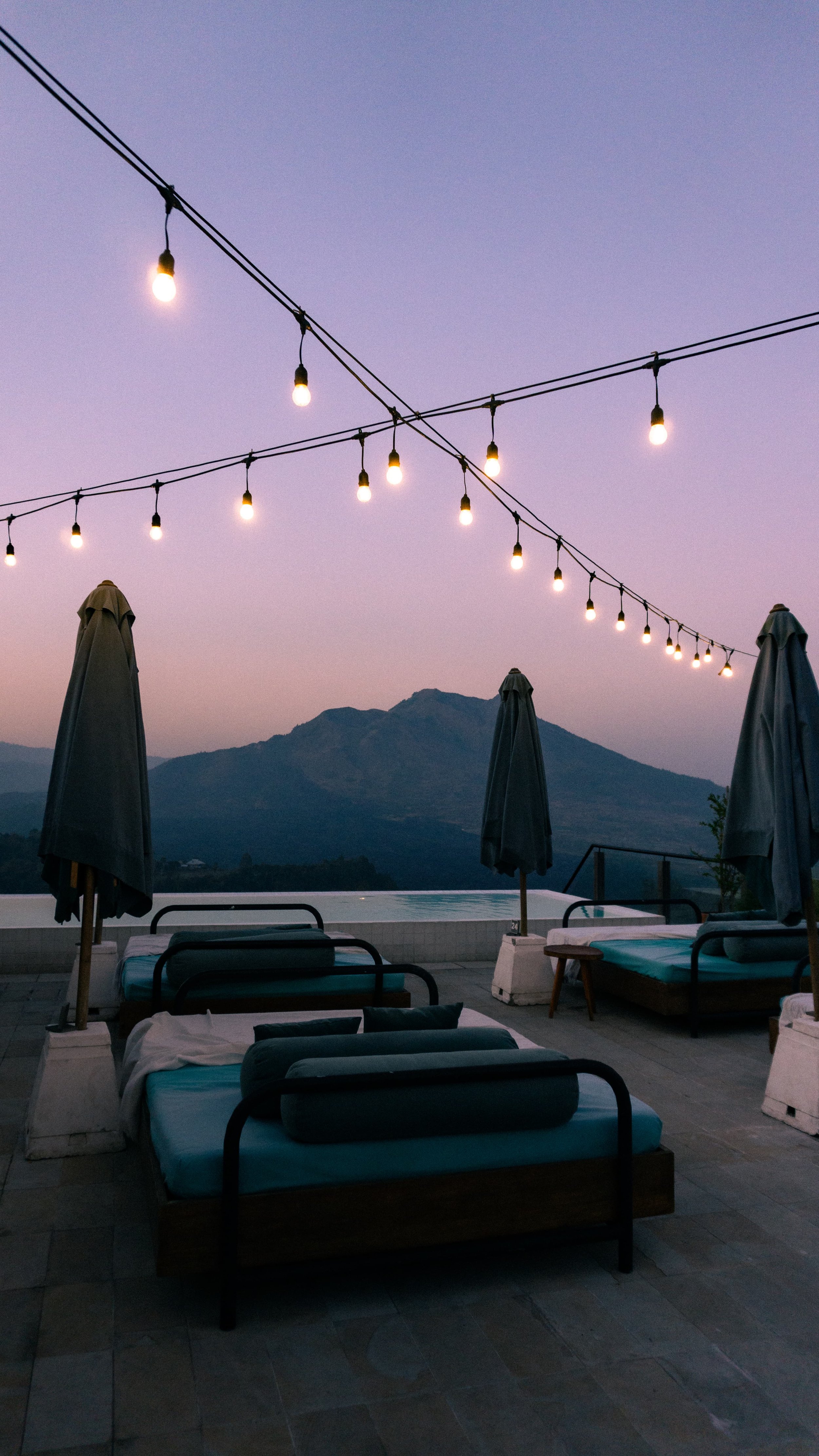
Kintamani
Best For: Glamping Under the Bali Stars, Nature Lovers, and Scenic Hiking Adventures
Escape the hustle and bustle of Ubud and venture just an hour away to the enchanting village of Kintamani. Nestled among three majestic volcanoes—Mount Abang, Mount Batur, and Mount Agung—this hidden gem offers breathtaking vistas, cloud-kissed cafes, and charming boutique glamping options. While most visitors come to Kintamani to hike Mount Batur’s iconic trails, others choose a more intimate camping experience in the mountains. Picture yourself watching the sunset over the volcanoes and lakes, sipping old-fashioned cocktails, and roasting marshmallows by the fire at night. Kintamani is the perfect place to experience a serene and adventurous side of Bali.
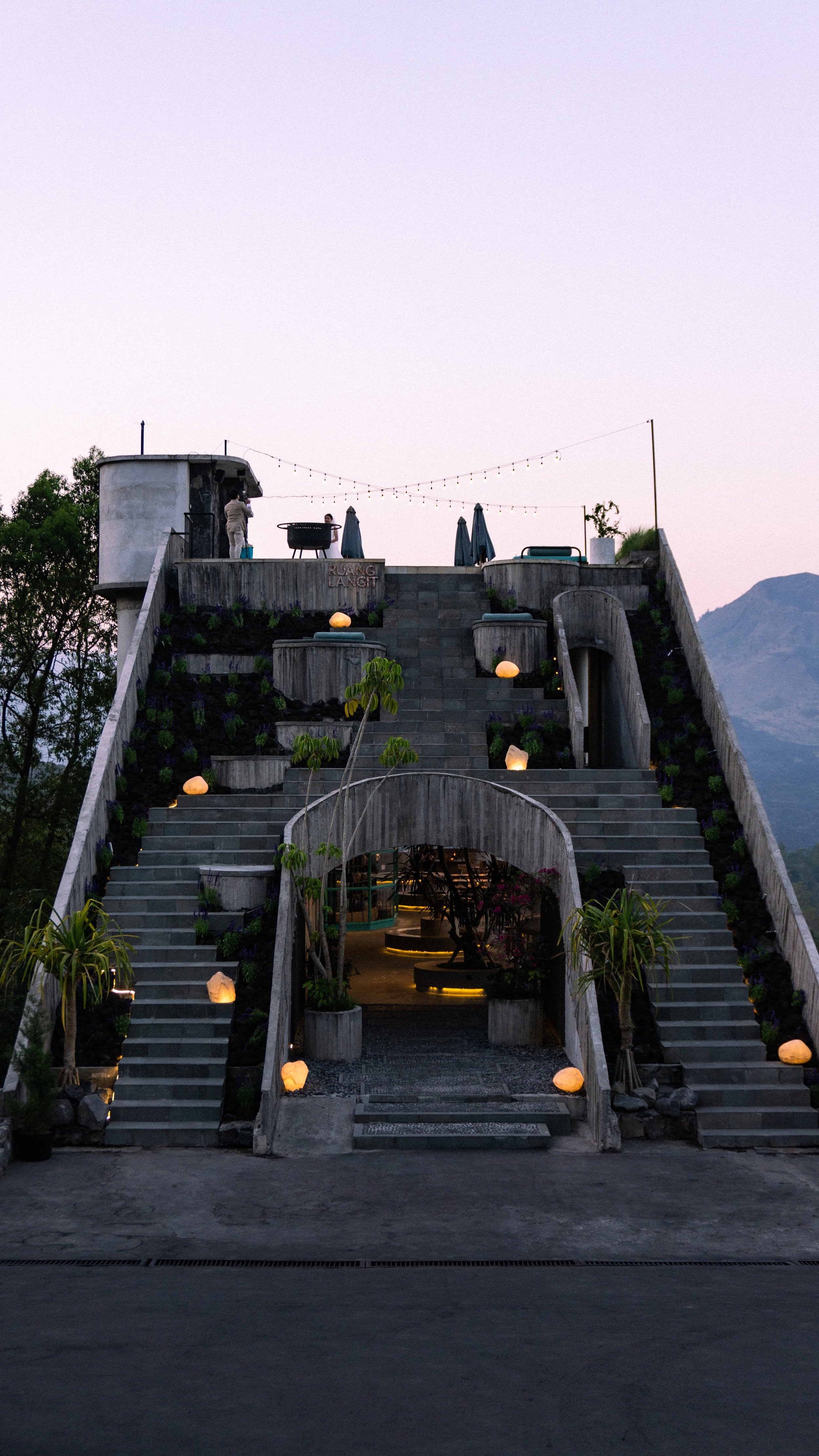
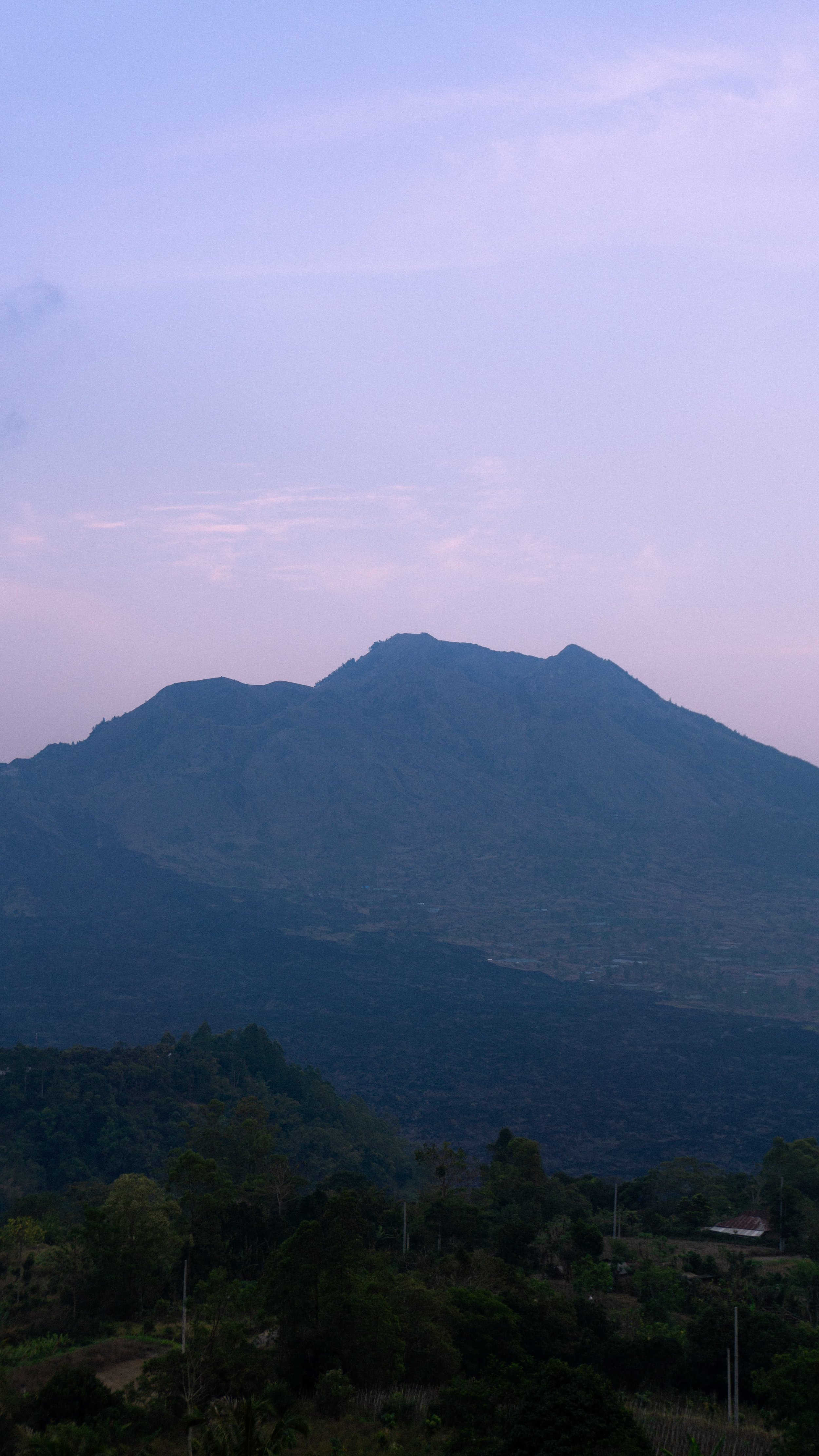
-
The best time to visit Kintamani is from May to December when the weather is cool and the skies are clear. Perched high above the clouds, Kintamani offers a crisp, refreshing climate that’s chilly year-round—perfect if you’re craving a taste of fall in Bali. I last visited in November, and it was absolutely dreamy! The misty mornings and cozy atmosphere make it an ideal escape from Bali’s warmer regions, offering a unique seasonal feel that’s rare on the island.
-
While most people visit Kintamani just for the day to conquer Mount Batur or check out the cloud-kissed cafes, I recommend spending a night at one of the glamping spots by the lakes. Staying overnight lets you fully soak in the tranquil atmosphere, enjoy a peaceful sunset, and wake up to the stunning views of the surrounding volcanoes. A night or two in Kintamani offers a more immersive experience and a chance to see a quieter, more enchanting side of Bali.
-
Kintamani’s dining scene is centered along one main road where most of the restaurants are located. These eateries offer great food with stunning views, but keep in mind that they’re rarely open for dinner since most visitors only come for the day. Dinner options in Kintamani are more limited, so if you plan to stay overnight, it’s best to check ahead or be prepared for a quieter dining experience. The few places that do stay open for dinner offer a cozy, local vibe that pairs perfectly with the cool mountain air.
-
Kintamani is refreshingly uncrowded compared to Bali’s busier spots. While a few cafes fill up during the day and Mount Batur gets busy with hikers, the overall vibe is calm and quiet. Once you step away from the main tourist attractions, you’ll find that Kintamani is a serene destination where you can enjoy the misty mountain air without the usual crowds. If you’re looking for a peaceful escape in Bali, Kintamani is the perfect spot.
-
There’s no nightlife in Kintamani, and that’s part of its charm! Instead of bars and clubs, your evening entertainment comes from the stunning night sky. Enjoy the peaceful stillness, gaze at the stars, and embrace the quiet mountain atmosphere. If you’re seeking tranquility and a break from the usual Bali nightlife, Kintamani offers the perfect setting for a night in nature.
-
The natural beauty of Kintamani is truly breathtaking. The area is defined by stunning farmland landscapes and panoramic views of Bali’s iconic volcanoes—Mount Batur, Mount Abang, and Mount Agung—rising majestically over two serene lakes. Whether you’re hiking, exploring the countryside, or simply enjoying the misty mountain air, Kintamani’s nature offers a peaceful escape with some of the most picturesque scenery in Bali.
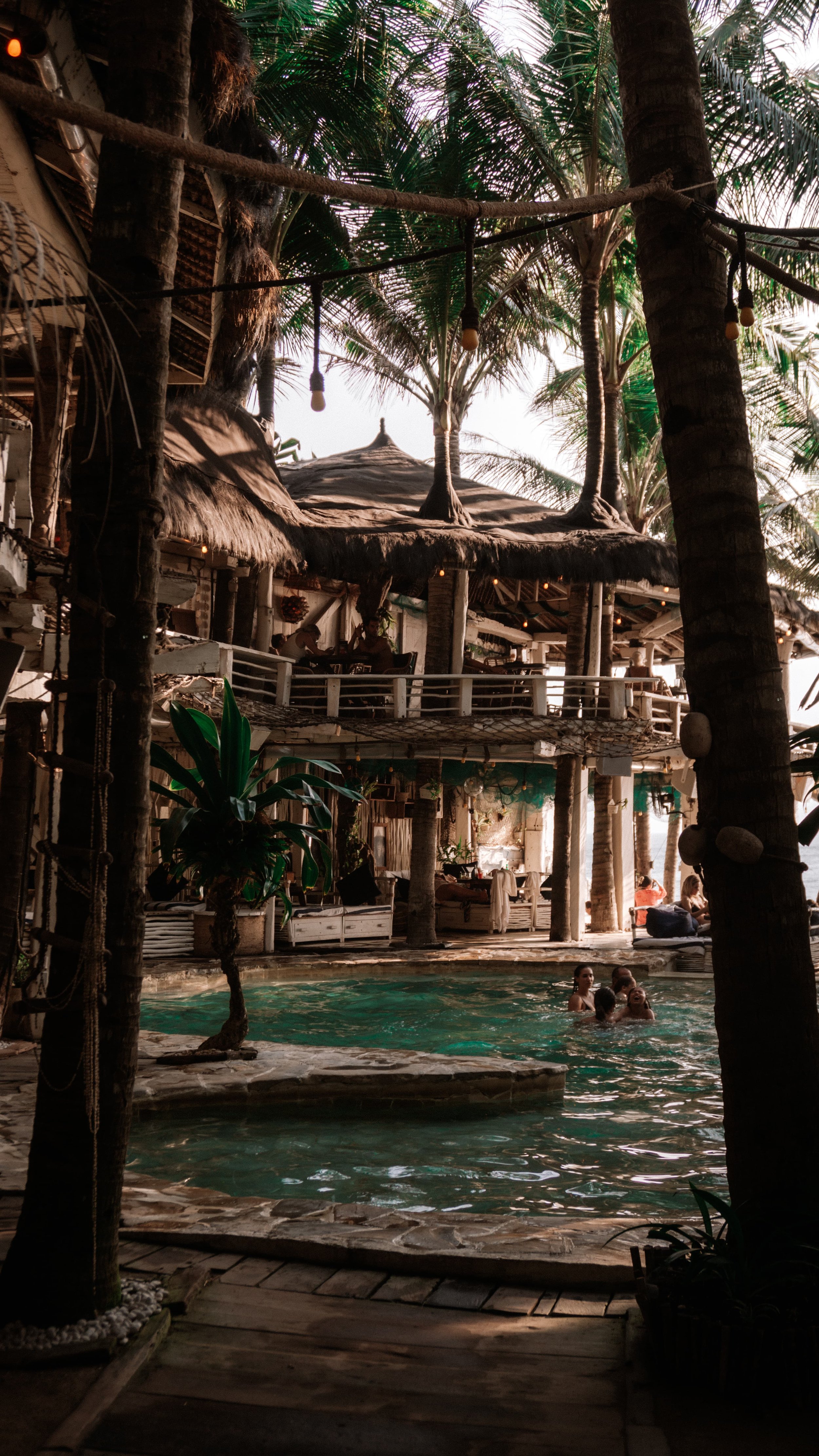
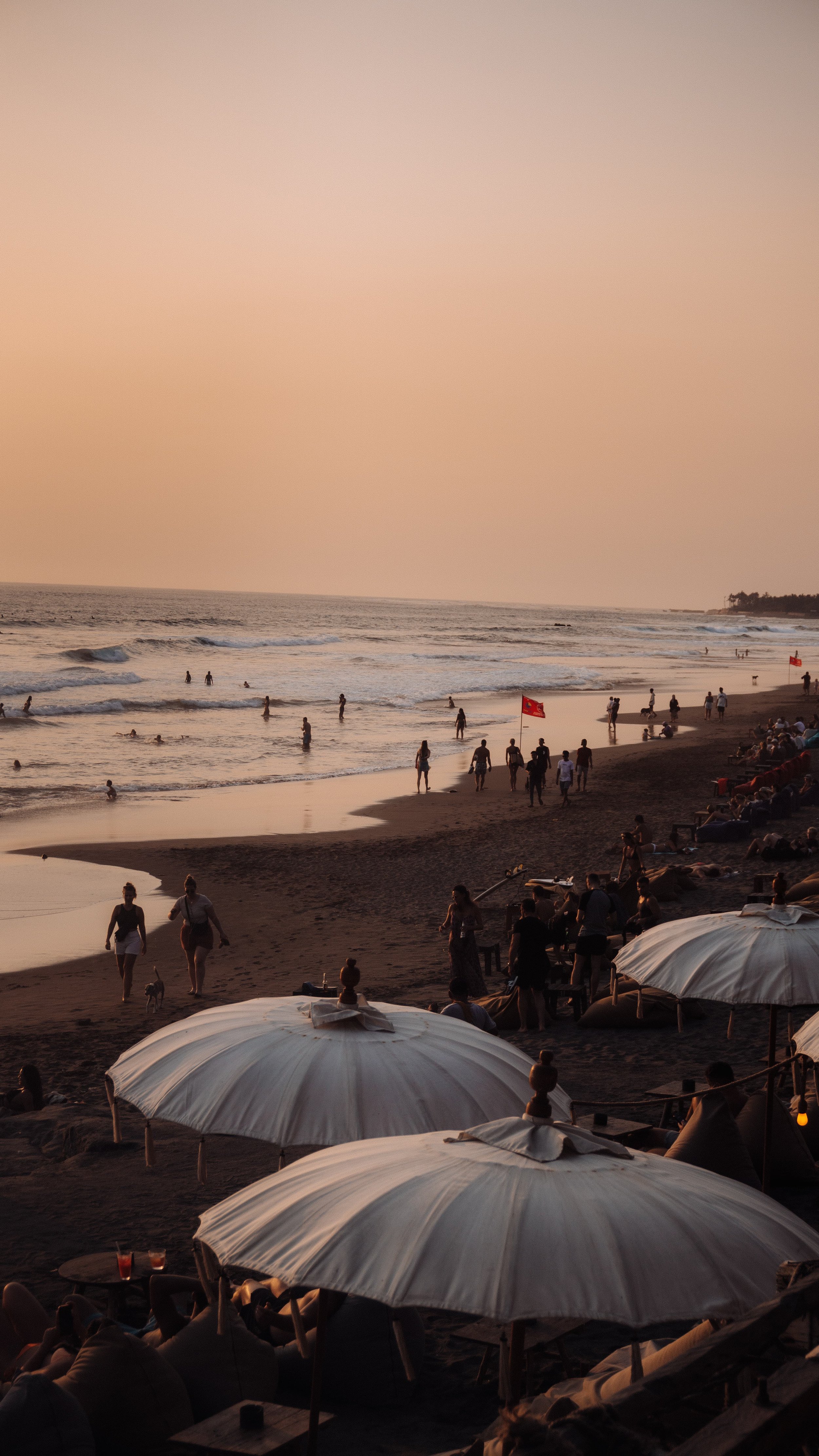
Canggu
Best for: Foodies, Digital Nomads & the Life of the Party
Canggu was once a quiet surf town with just a handful of local warungs and surf shacks lining its black sand shores. Over the years, rice fields have given way to lavish villas, swanky bars, Instagram-worthy cafes, and chic Aussie-inspired boutiques. Now, nearly every stretch of the beach is home to a buzzing beach club, with music pumping from afternoon until late into the night—often featuring world-class DJs. Whether you love or hate the transformation, there’s no denying that Canggu is Bali’s most happening neighborhood. It’s best for a weekend trip, as the traffic and crowds can be overwhelming, but the incredible food, shopping, and nightlife make it worth the visit.
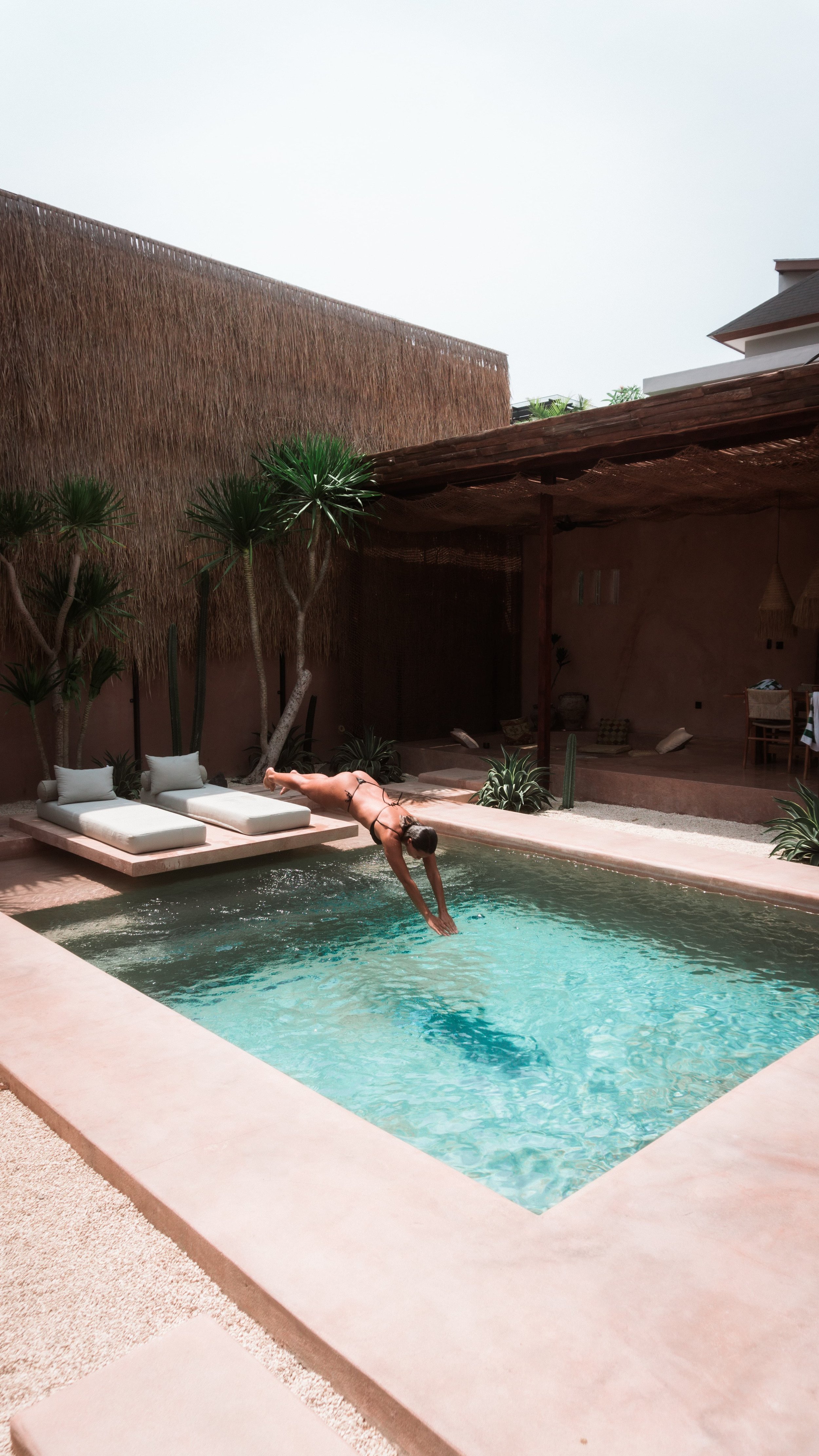
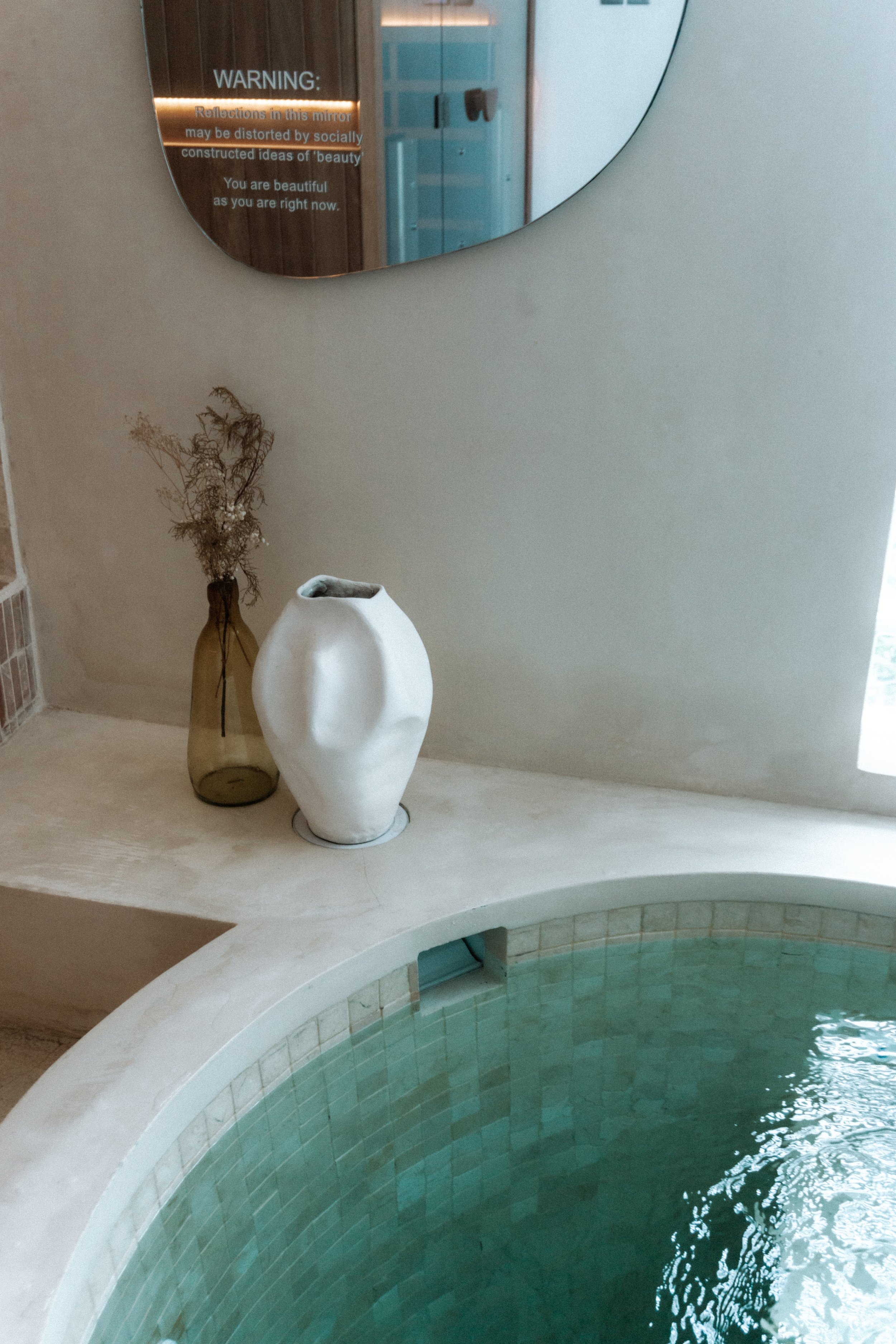
-
The best time to visit Canggu is from May to October, during Bali’s dry season. For those who love the buzz, summer is when you’ll find the top DJs and the most lively parties. However, if you prefer a more laid-back vibe with fewer crowds, I recommend the shoulder season in September and October. You still get great weather, but without the overwhelming crowds, making it easier to enjoy Canggu’s beaches, cafes, and nightlife at a more relaxed pace.
-
Canggu can be quite overwhelming with its bustling streets, crowds, and non-stop energy, so I typically treat it like a weekend city break and stay for 2-4 nights. This is just enough time to experience the amazing food, hit up some beach clubs, and do a bit of shopping without getting caught up in the chaos. Whether you’re there for the surf, the parties, or the trendy cafes, a short stay is ideal for soaking up the best of what Canggu has to offer.
-
Many argue that Canggu is the food capital of Bali, and it’s easy to see why. This town is packed with trendy cafes, stylish restaurants, cozy coffee shops, and buzzing bars at every turn. Whether you’re after a healthy smoothie bowl, a fancy dinner, or a late-night bite, Canggu’s food scene has something for everyone. The variety and quality here are hard to beat, making it a must-visit destination for food lovers.
-
Canggu is hands-down the most crowded place on the island right now. The traffic is crammed, and the streets are always bustling with people, scooters, and endless activity. Whether it’s peak season or not, you’ll find the area buzzing with locals, expats, and tourists alike. While the energy is part of what makes Canggu so popular, it’s definitely something to be prepared for if you’re heading there.
-
Canggu is the place to be for nightlife in Bali. From world-class beach clubs and nightclubs to speakeasies and non-stop parties, Canggu offers something for everyone, every night of the week. The scene is vibrant and diverse, with events happening around the clock if you know where to go. Whether you're into live music, DJ sets, or just want to dance the night away, Canggu has it all.
-
Canggu isn’t exactly known for its natural beauty. While there is a brown sand beach with stunning sunsets, it’s often littered with trash, and the water quality can be hit or miss. As for the once-lush rice fields, many have been replaced with villas and developments. Although nature still has a presence in Canggu, the rapid growth and urbanization have significantly changed the landscape from what it once was.
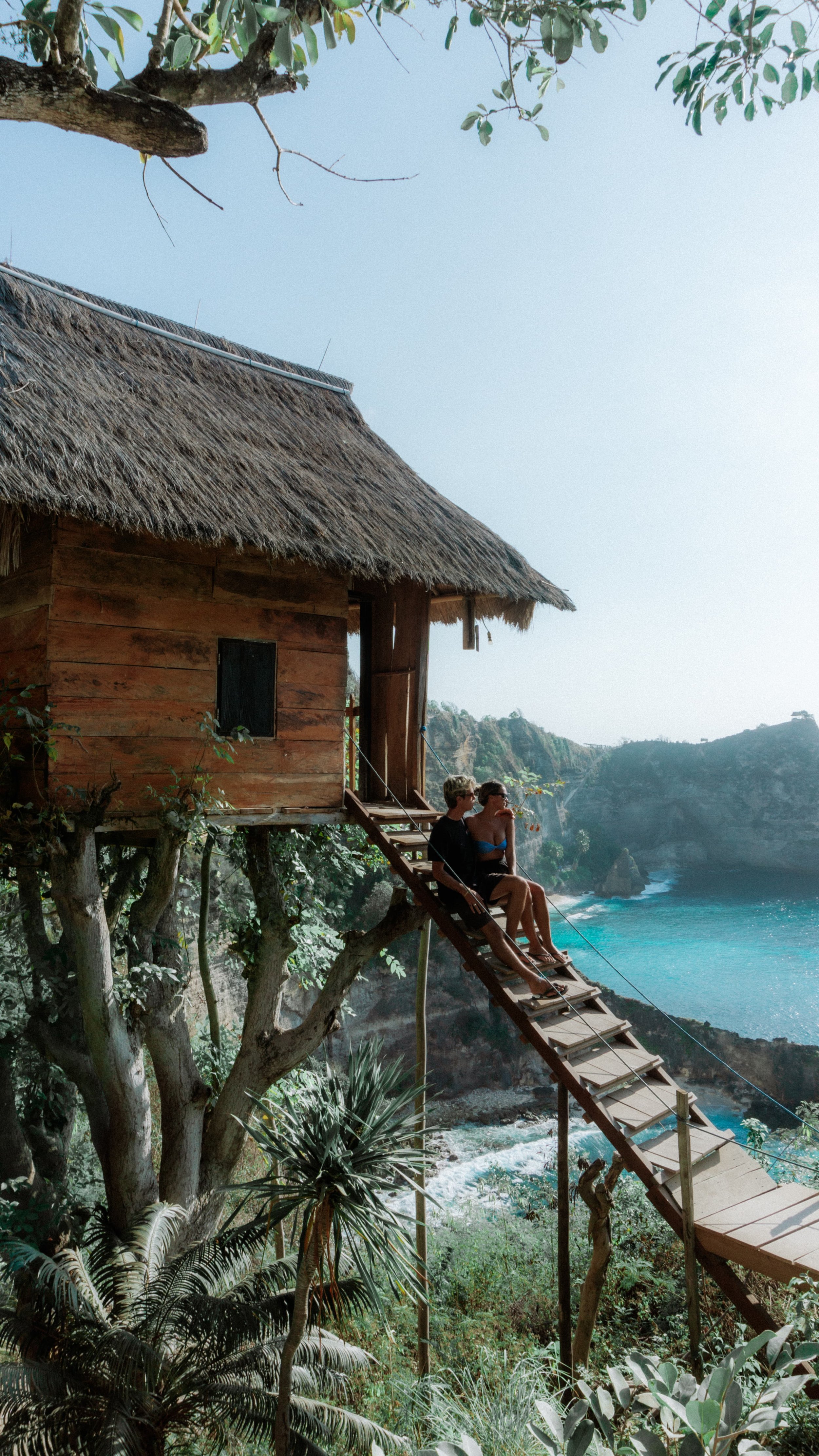
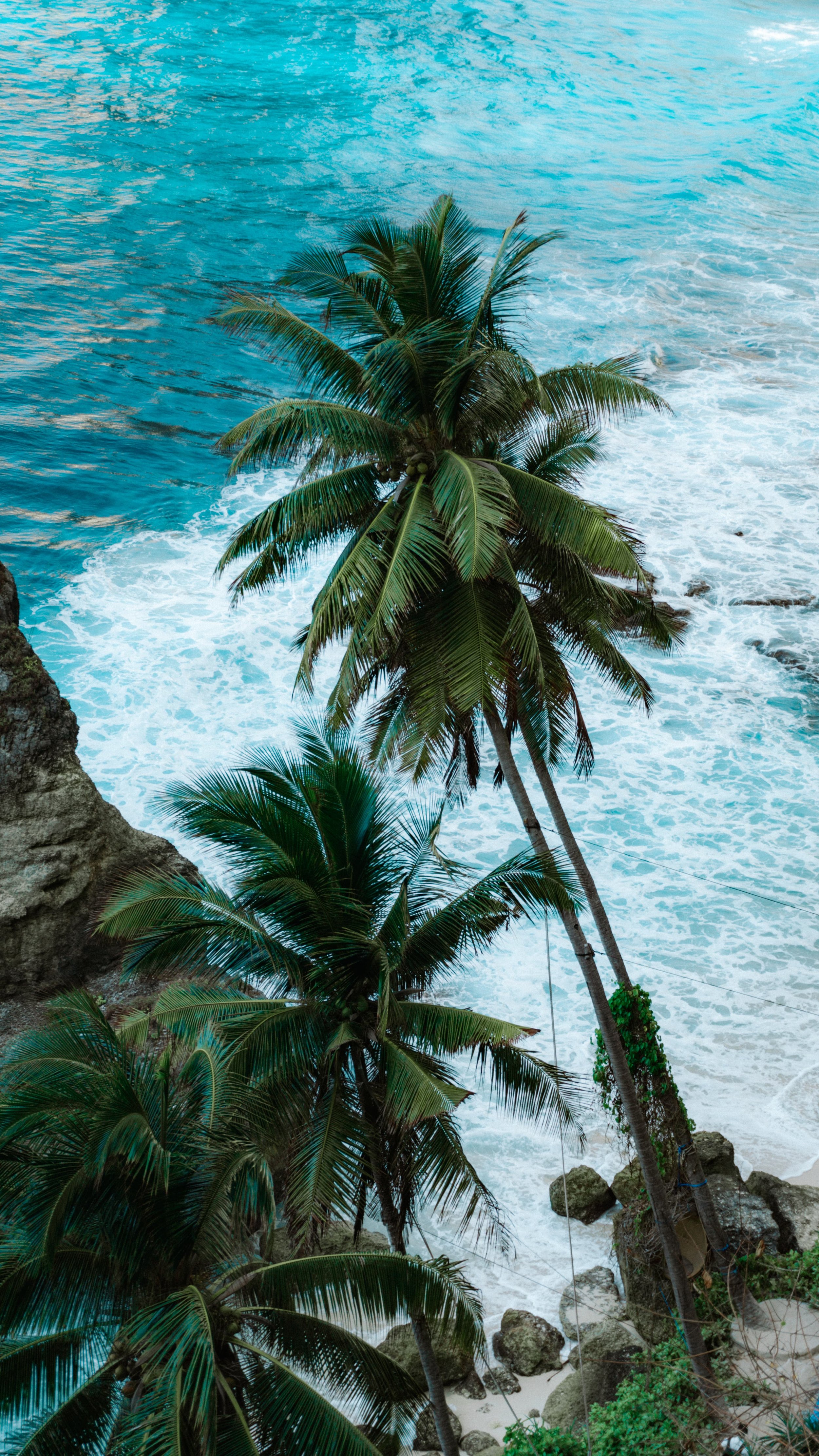
Nusa Penida
Best for: Instagram Pictures
Nusa Penida is the wild, rugged sister of Bali’s more laid-back islands. Known for its dramatic cliffs, turquoise waters, and Instagram-famous spots like Kelingking Beach, it’s a must-visit for adventure seekers. The island offers everything from epic hikes and hidden beaches to snorkeling with manta rays. While it’s not as developed as Nusa Lembongan, that’s exactly what gives it its off-the-beaten-path charm. Get ready for breathtaking views, thrilling adventures, and a side of Bali you won’t find anywhere else.
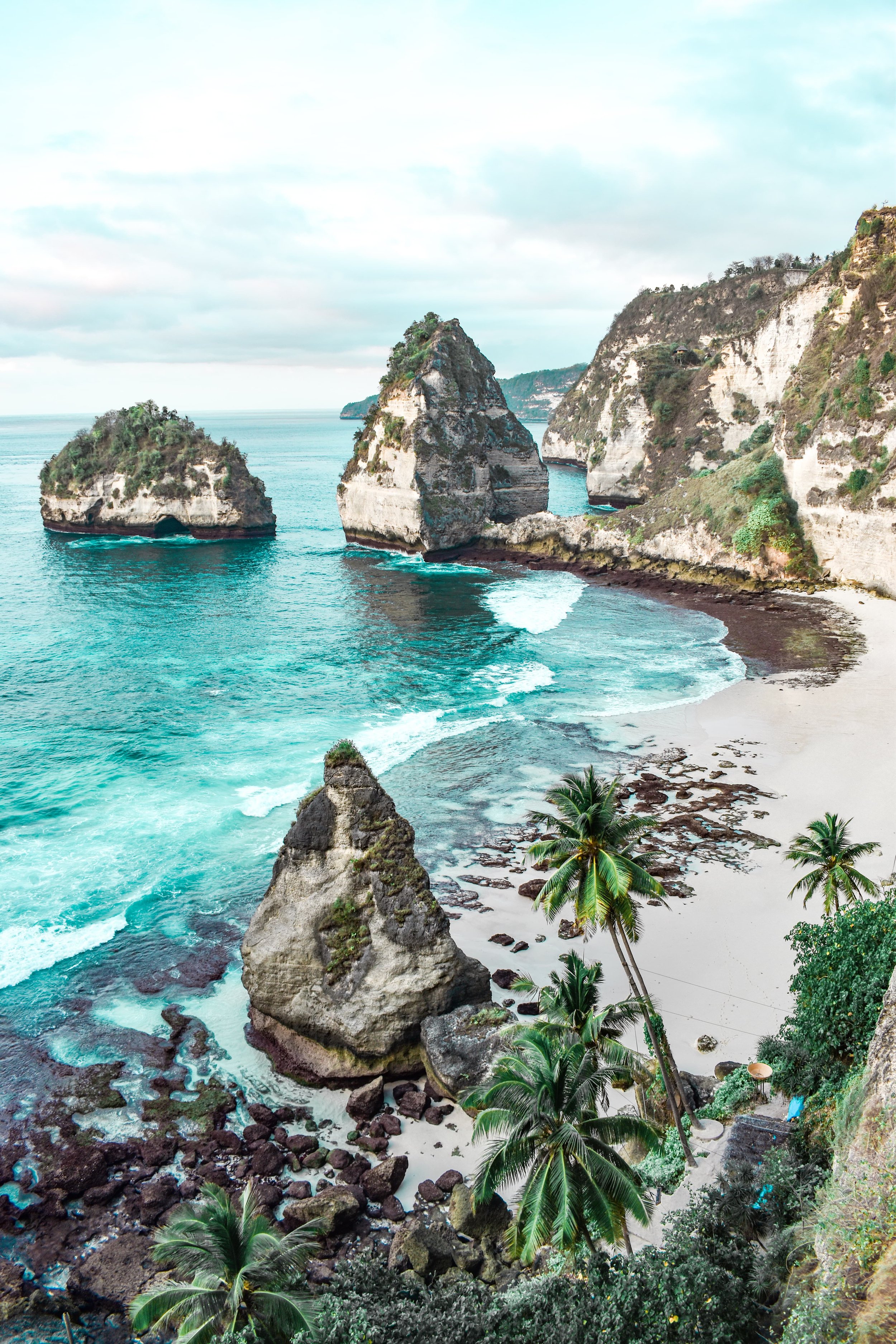
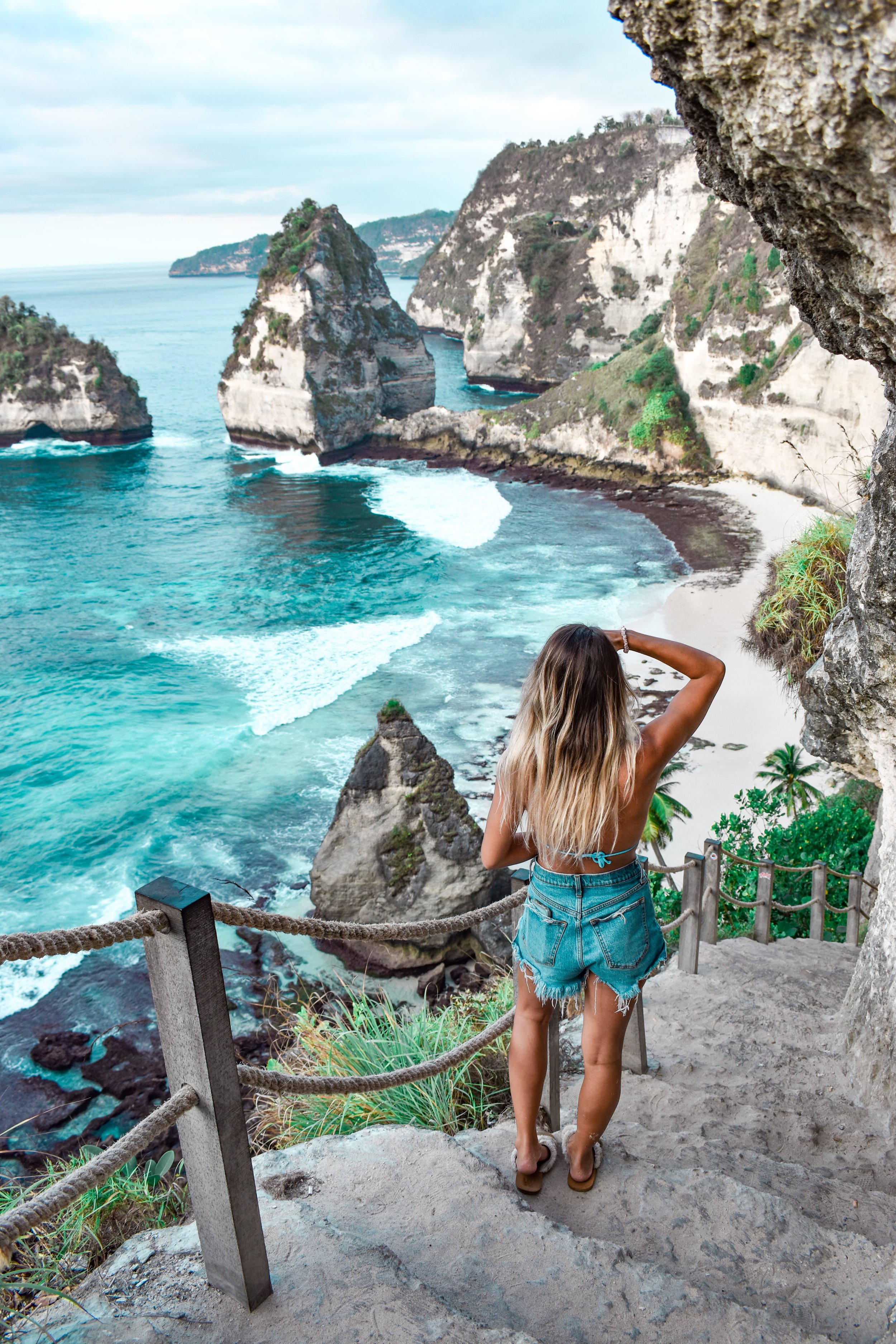
-
Nusa Penida can get quite busy, so I recommend visiting during the shoulder season in September and October. The Nusa islands tend to have far less rain than Bali, making this an ideal time to explore. To truly enjoy the island’s top spots without the crowds, be sure to wake up early each day—you’ll thank yourself when you’re enjoying those famous views with fewer people around.
-
You can definitely do a day trip to Nusa Penida and hit the main highlights, but if you want a more relaxed experience, I’d recommend staying for 1-2 nights max. This gives you enough time to explore the island’s famous spots without rushing, while still keeping your itinerary manageable. With its rugged terrain and stunning viewpoints, Nusa Penida is ideal for a short stay packed with adventure.
-
Nusa Penida’s food scene is growing fast, with more cafes and beach clubs popping up every day. The main road by the harbor is lined with plenty of places to eat, offering everything from local dishes to Western favorites. Recently, more options have also started appearing on the Northeast side of the island, giving you even more spots to refuel after a day of exploring.
-
Nusa Penida attracts heavy crowds, similar to hotspots like Canggu and Ubud. Most visitors arrive around 9 AM for day trips, so if you want to experience the island’s beauty without the crowds, I highly recommend waking up early—think 6 AM. Getting a head start not only gives you quieter moments at popular spots but also lets you soak in the island’s magic before the tour groups flood in.
-
Nightlife in Nusa Penida is practically nonexistent. Even the bars close early, making the island more suited for early risers than night owls. If you’re looking for vibrant nightlife, this isn’t the place—but if you’re into quiet evenings after a day of adventure, Nusa Penida’s laid-back vibe is perfect.
-
Nusa Penida boasts some of the most incredible nature in Bali, with rugged cliffs, crystal-clear waters, and beaches that consistently rank among the best in the world. The island’s dramatic landscapes offer stunning views at every turn, whether you’re exploring hidden coves or standing atop towering cliffs overlooking the ocean. If you’re a nature lover, Nusa Penida’s raw, untouched beauty is truly something special.
Sidemen
Best for: An authentic Balinese experience
If you’re looking to escape the typical Bali tourist traps, venture off to Sidemen, a hidden gem nestled in the jungles of East Bali. With endless rice terraces, tropical waterfalls, eco-friendly bamboo homes, and unmatched Balinese hospitality, this remote village tucked away in the foothills of Mount Agung offers a rare glimpse of untouched, authentic Bali. Add a few extra nights here to your itinerary—it’s a peaceful retreat that’s worth every second.
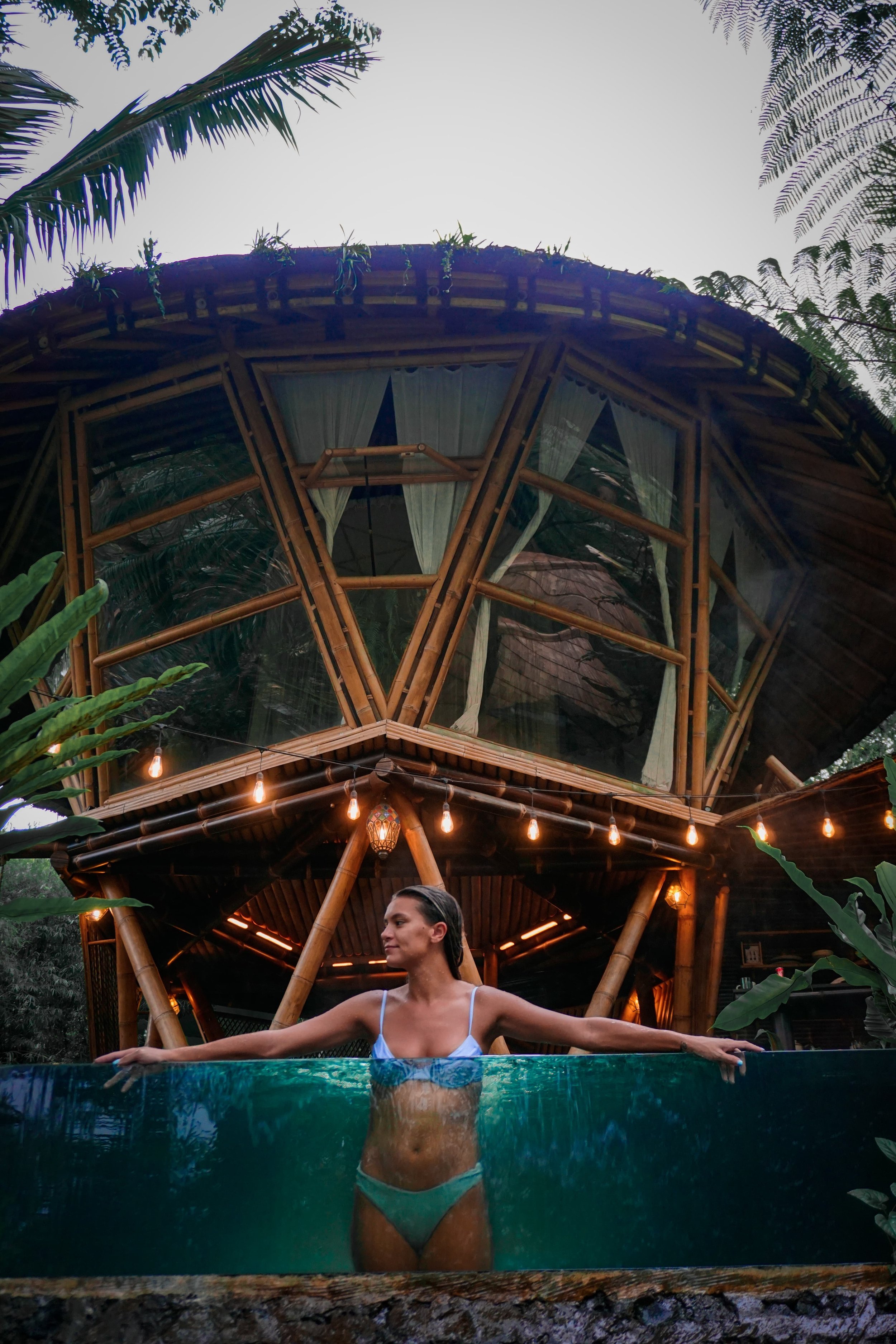
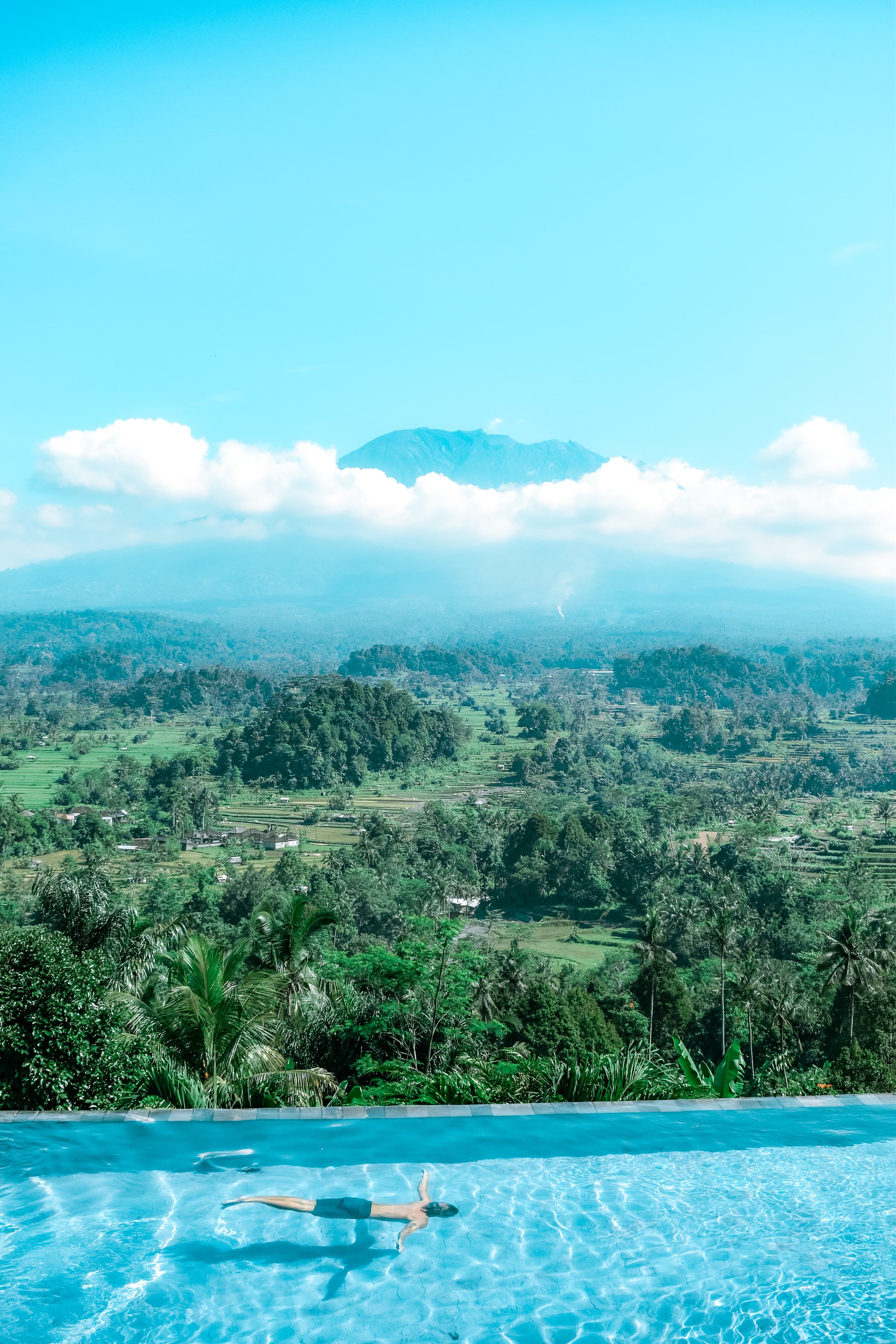
-
In my experience, Sidemen tends to get quite a bit of rain during the rainy season, so it’s best to plan your visit during the dry season from May to August. During this time, you’ll have clear skies, making it easier to explore the lush rice terraces, waterfalls, and stunning views without the downpours.
-
To fully soak in Sidemen’s charm, I recommend staying for 2-3 nights. This gives you enough time to enjoy the tranquil vibe, explore the surrounding nature, and get a true taste of authentic Bali away from the crowds.
-
Sidemen’s food options are limited, but you’ll find a few gems. There are 2-3 good Western restaurants located within the hotels, offering some international favorites. Beyond that, the village is mostly home to local warungs serving traditional Balinese dishes. While the selection may be modest, the authenticity and flavors make it a worthwhile experience if you’re looking to dive into the local cuisine.
-
Sidemen is a peaceful, rural escape far removed from Bali’s more crowded areas. Being off the beaten path means you’ll encounter very few crowds here. The village remains untouched by mass tourism, allowing you to enjoy the tranquil atmosphere and authentic Balinese culture without the hustle and bustle. If you’re looking for a serene getaway, Sidemen’s quiet charm is exactly what you need.
-
There is none!
-
Sidemen is nestled right beneath the majestic Mount Agung, offering unreal views of this towering volcano. The area is a nature lover’s paradise, with rice fields stretching for miles and a landscape dotted with rivers and hidden waterfalls. The lush greenery and scenic beauty make Sidemen feel like a world away from the busier parts of Bali, providing the perfect backdrop for those seeking tranquility and connection with nature.
Read my Sidemen Guide
Explore Ubud, Bali with this detailed guide featuring top attractions, cultural experiences, the best restaurants, and beautiful accommodations for an enriching and serene visit.
The Gili Islands
Best for: Parties in Paradise (Gili T), An quaint island escape (Gili Air), Honeymooners (Gili Meno)
Off the northwest coast of Lombok lies a group of three idyllic islands known as the Gilis. With tropical turquoise waters and pristine white sand beaches lined with swaying palm trees, these tiny islands are a traveler’s paradise. If you’re familiar with Bali or planning a trip there, you’ve probably heard of the popular Gili Trawangan, known for its vibrant party scene where beach clubs pump music until late. For a more relaxed vibe, head to Gili Air, where boutique resorts, seaside cafes, and laid-back beach clubs create a dreamy escape. But if you’re seeking a quieter oasis, the lesser-known Gili Meno offers all the charm of its siblings without the crowds, making it the perfect spot for a serene getaway.

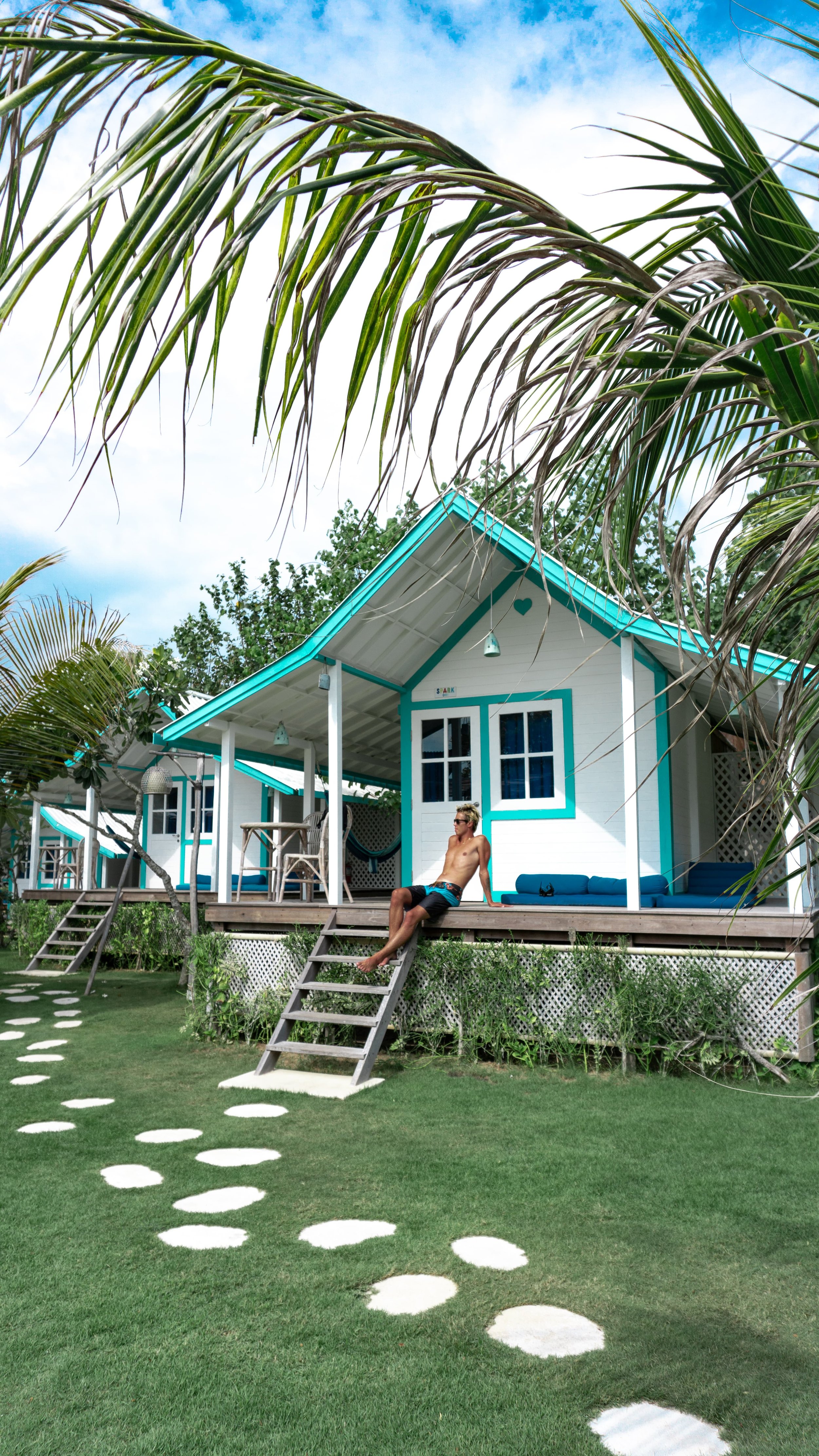
-
The Gili Islands enjoy great weather year-round, making them a solid choice no matter when you visit. However, the islands are busiest during the dry season, typically from May to October. The last time I visited the Gilis in November, it was HOT, but still enjoyable with fewer crowds. If you prefer a more relaxed vibe, visiting in the shoulder months like November or April can give you the perfect balance of good weather and a quieter atmosphere.
-
You can easily spend a weekend on one Gili island, or stretch it out over a week to explore all three. Each island offers something unique, from Gili T’s party vibe to Gili Air’s relaxed atmosphere and Gili Meno’s quiet charm. Given that it takes around 3 hours to get there by fast boat, it’s worth staying for a while to make the most of your trip. You can also incorporate the Gilis as part of a journey from Bali to Lombok, adding more adventure to your itinerary.
-
All three Gili Islands offer great food, but Gili T has by far the most options, from local warungs to trendy beachside cafes and international restaurants. Gili Air also has a solid range of dining spots, blending laid-back vibes with delicious eats. On the smaller Gili Meno, food choices are more limited, but you’ll still find a handful of cozy spots serving up tasty meals with a side of serenity.
-
Gili Trawangan is the busiest of the three, with crowds gathering from dusk till dawn as beach clubs keep the music pumping. On the opposite end, Gili Meno, often called the "honeymoon isle," is all about serenity, with virtually no crowds—just pure peace and quiet. Gili Air strikes the perfect balance as the “Goldilocks isle,” offering a laid-back vibe with just enough buzz to keep things interesting without overwhelming the scene.
-
Gili T is the go-to spot if you’re looking for non-stop parties. Every day of the week, at nearly every hour, you’ll find something happening—that’s what it’s famous for. Gili Air has a more relaxed scene with a few beach bars offering live music and cocktails, perfect for those who want a good time without the chaos. Gili Meno, on the other hand, has no nightlife to speak of—just peace, quiet, and starry skies.
-
The Gili Islands boast some of the most stunning beaches in Indonesia, with soft white sand and crystal-clear waters. The snorkeling here is top-notch, with highlights like shipwrecks and the famous underwater statues near Gili Meno. You’ll also find a turtle sanctuary dedicated to protecting these incredible creatures, adding to the island’s natural charm. Whether you’re exploring the vibrant marine life or simply soaking up the sun, the Gilis are a nature lover’s paradise.
Read my Gili Meno Guide
Discover the serene beauty of Gili Meno with this guide, featuring pristine beaches, crystal-clear waters, the best snorkeling spots, and charming accommodations for a peaceful island escape.
Sumberkima
Best for: Off the beaten path adventures, diving, peace & quiet
Sumberkima is a rarely visited part of Bali, nestled up in the Northwest near the national park. The few who do make their way here usually visit Menjangan bay, home to Bali's most stunning coral reserve. During our visit, we stumbled upon a must-do experience: planting corals or mangrove trees with metamorforsa Bali. Not only does this activity allow you to contribute to the environment, but it's also an incredible way to reduce your carbon footprint while immersing yourself in the beauty of Bali. Don't miss out on this unique opportunity to make a difference while traveling.
Sumberkima Resorts, Airbnb’s & Homestays
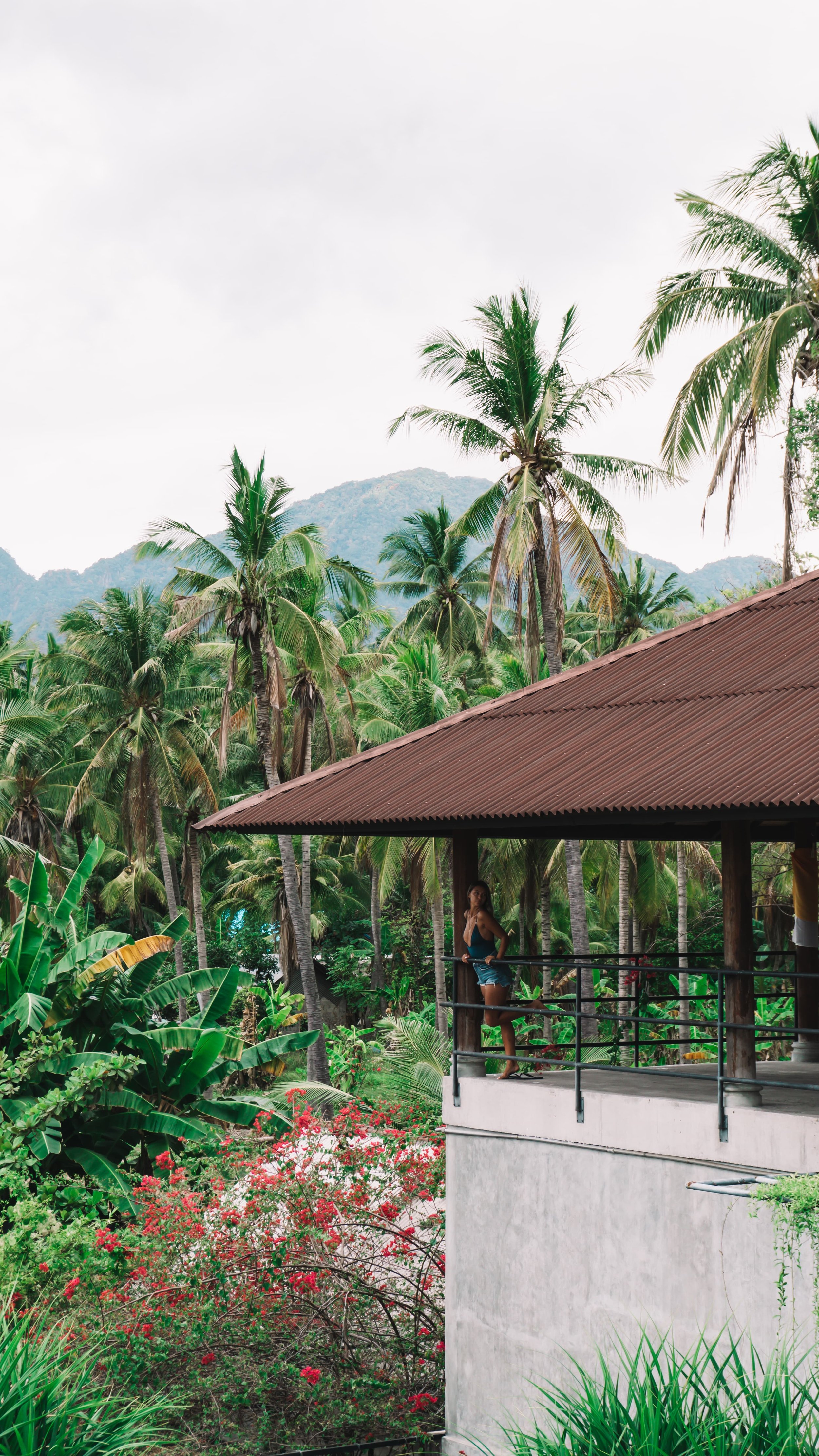
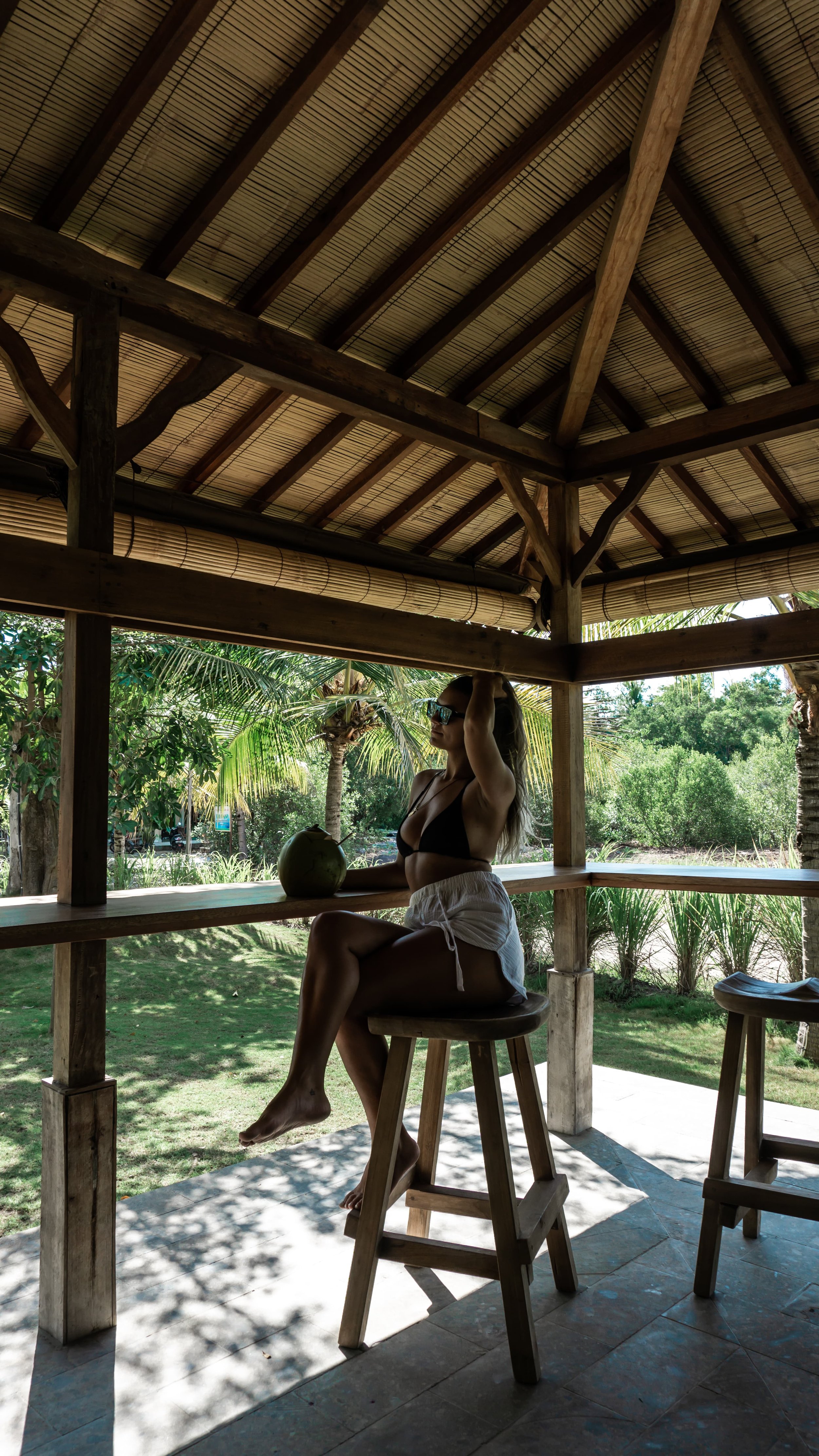
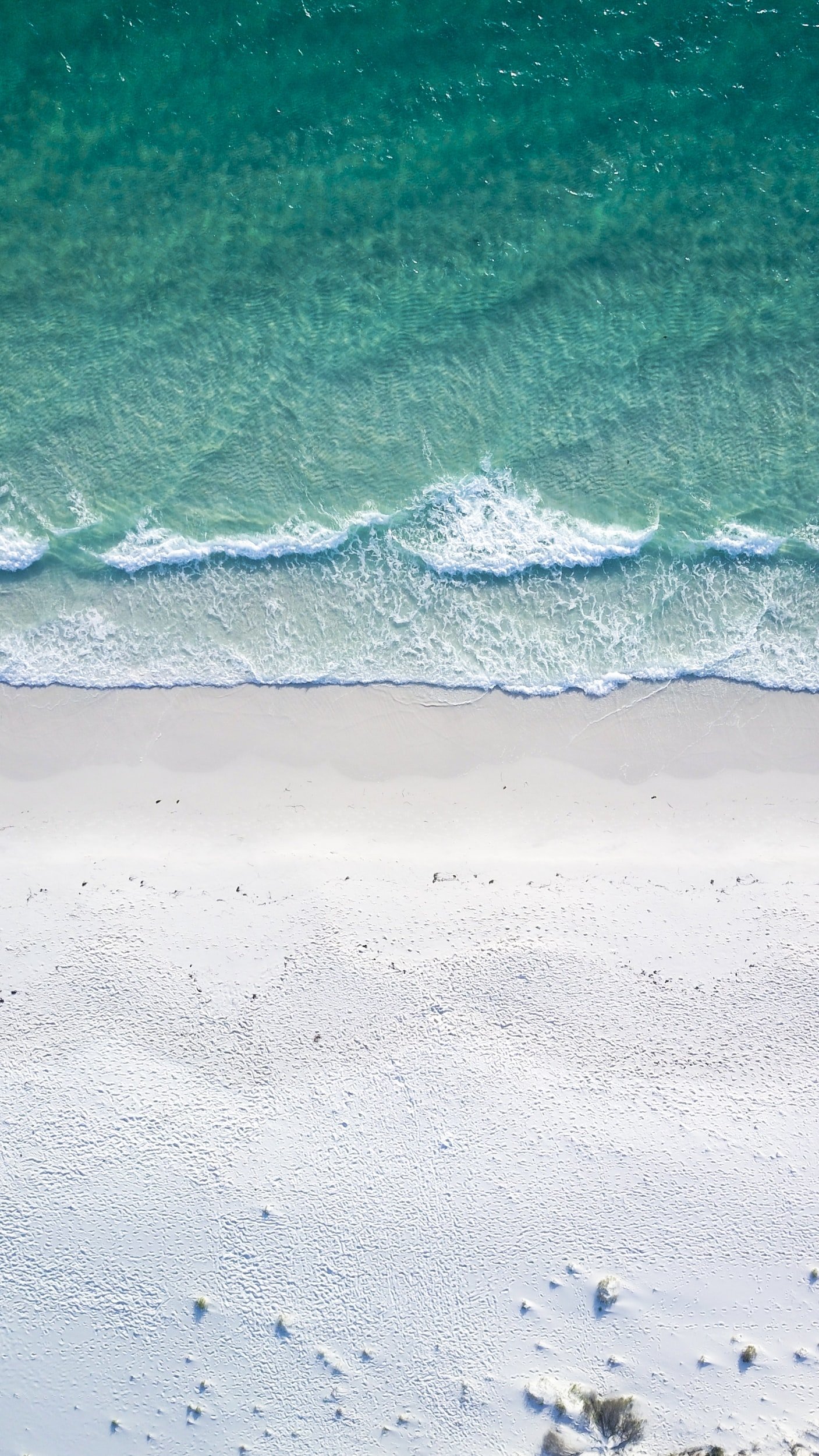
Bali’s best resorts, ecostays, homestays, and hostels.
*** when you book using my links, I earn a small fee to help fund my free content & travel guides.
Explore destinations in Bali, Indonesia

Travel health insurance is essential for anyone visiting Bali. . Make sure you're covered before your trip!
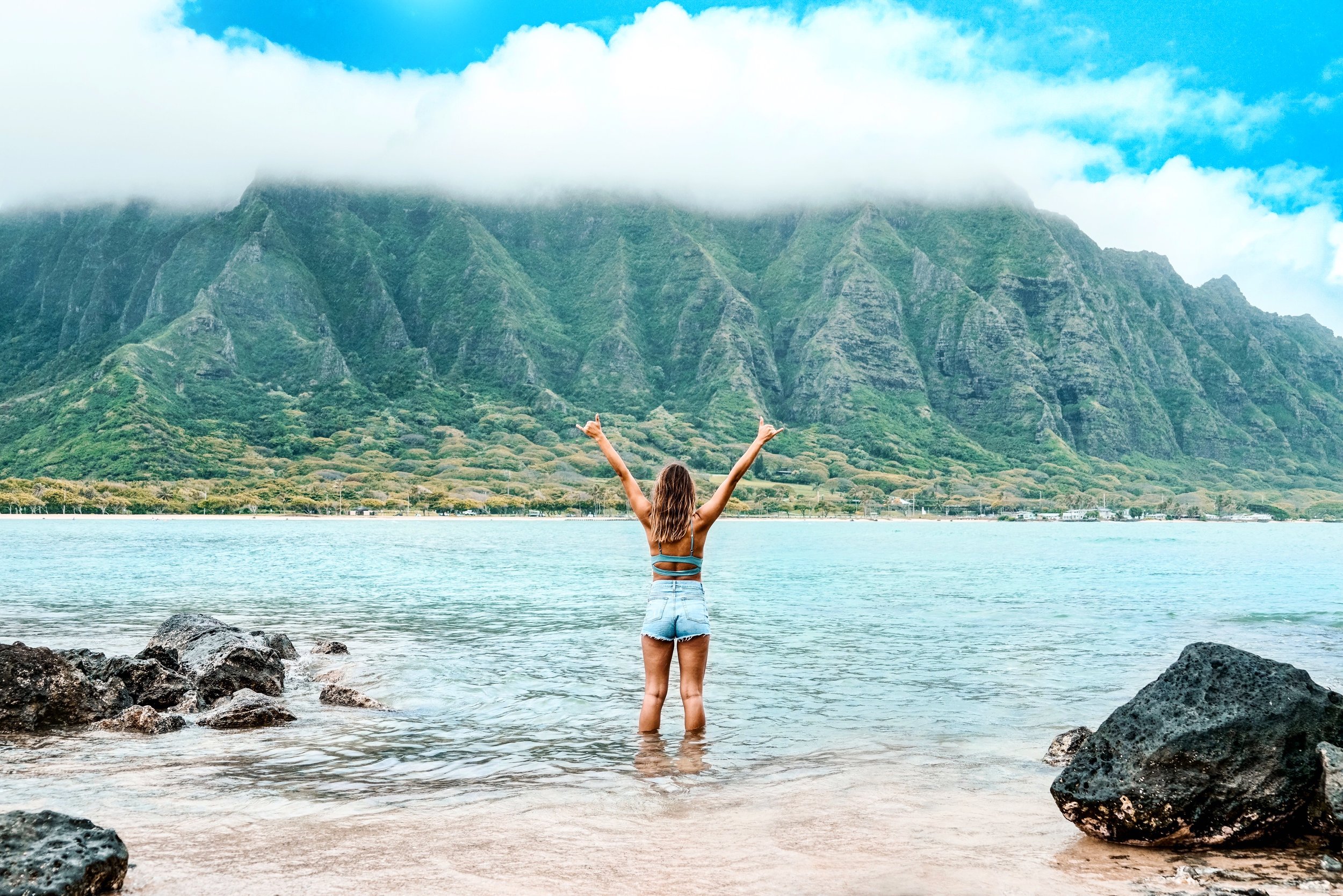





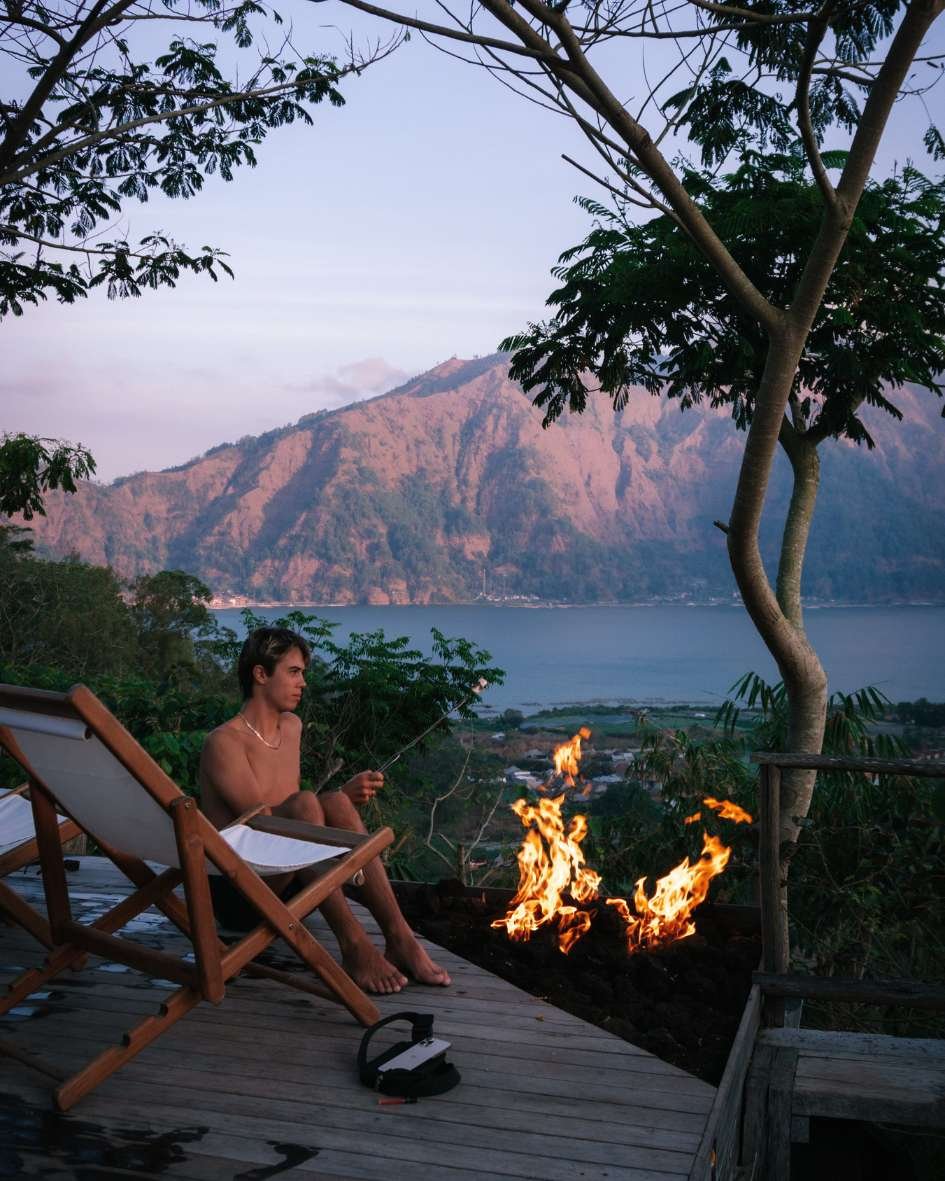















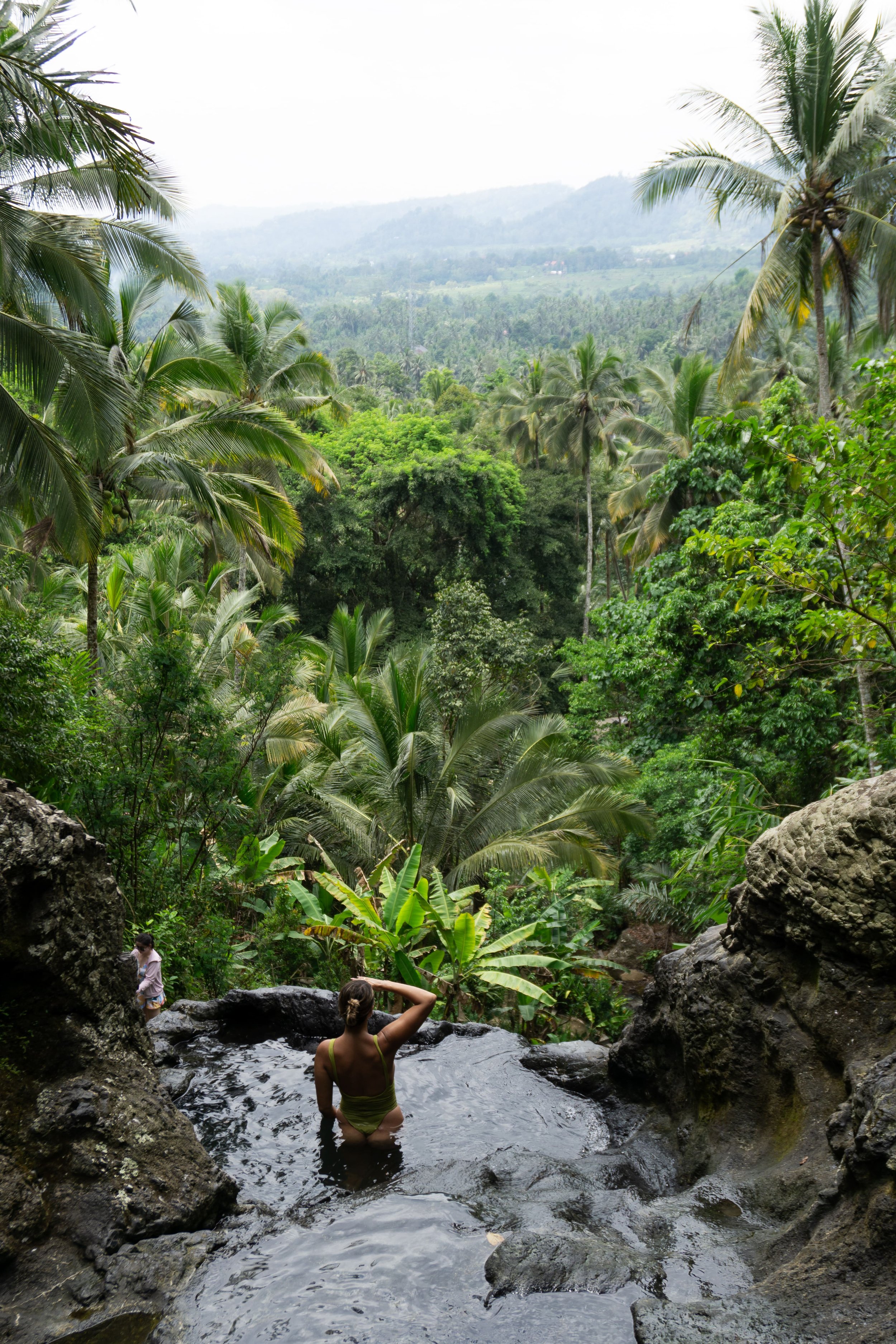

Discover Sidemen, Bali’s hidden gem, with our travel guide to the best eco-stays, scenic viewpoints, temples, and unique activities in East Bali.